Want to learn how to start a blog?
Below is the most comprehensive resource on the internet!
From setting up a domain, hosting and WordPress…
To driving Pinterest & SEO traffic and making money from affiliate marketing and products.
It’s all here.

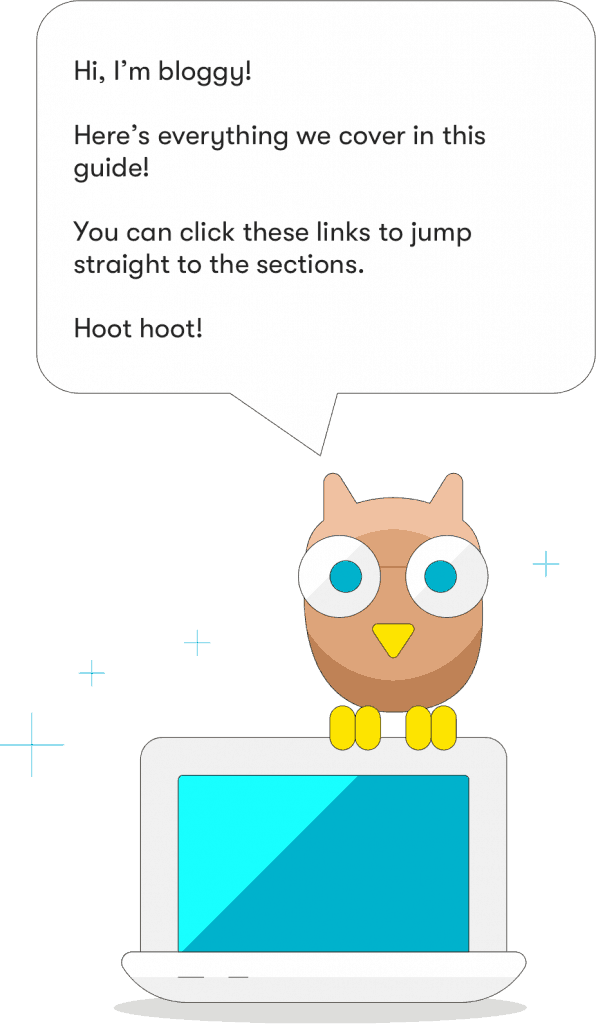
Ready to start NOW–and want to skip to the technical set-up?
If starting a blog is just an idea in your head (meaning you haven’t done ANYTHING yet)…
I’d suggest following along with the first few sections of this guide, and doing the work at the same time:
Do these things while going through the first few sections!
Then, bookmark this post and refer back to it once you’ve actually got your blog set up.
If you already have a WordPress blog set up, use the navigation above to head to the subjects you’d like to learn more about!
First, take note!
80% of bloggers don’t make it through their first year.
Blogging is really hard.
WAY too many bloggers quit in their first year due to overhyped expectations!
Don’t be that blogger.
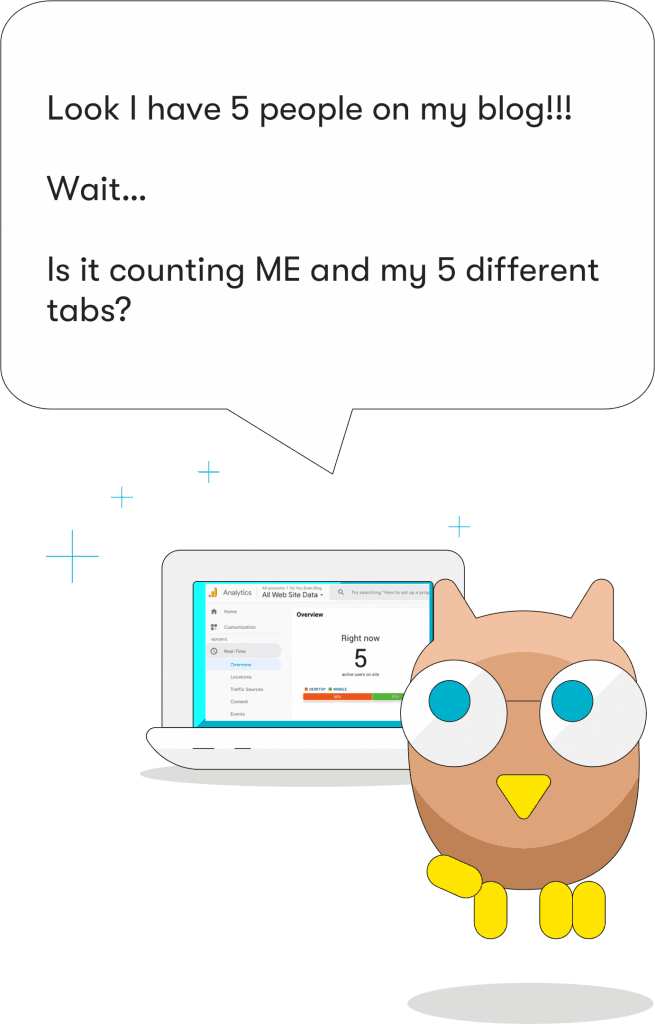
If you want full-time income from your blog, it’s going to take 18+ months in the best case scenario. Part-time income could occur much sooner!
I’d bet my life savings (not a huge risk) on the following: If you were to publish 3 pieces of content a week for 3 years, you would be bringing in a few thousand dollars a month.
Bloggers who persist and consistently publish good content are the ones who thrive. Let’s be THOSE bloggers.
The bloggers who see the most growth in year one are those who get connected with awesome blogging groups.
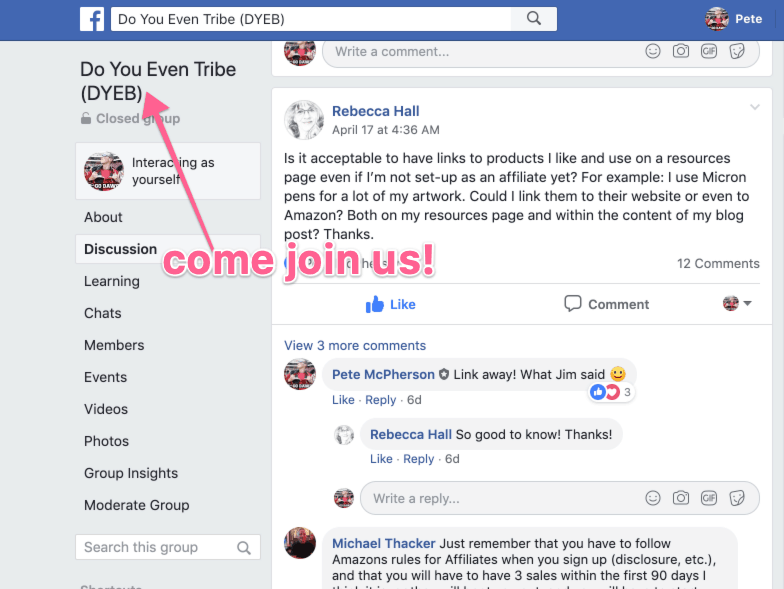
Build relationships and DO NOT HESITATE TO ASK QUESTIONS!
Speaking of communities, Click here to join the Do You Even Blog private Facebook group.
You’ll get free access to a TON of helpful bloggers, some of which make $100k+ from their blogs, and you’ll find NO spammy self-promotion or sales (even from me, and it’s my group!)
I KNOW you’d rather jump into setting up WordPress and buying domains…
But defining your mission and reader avatar is a VITAL step to connecting with people and driving BLOG TRAFFIC.
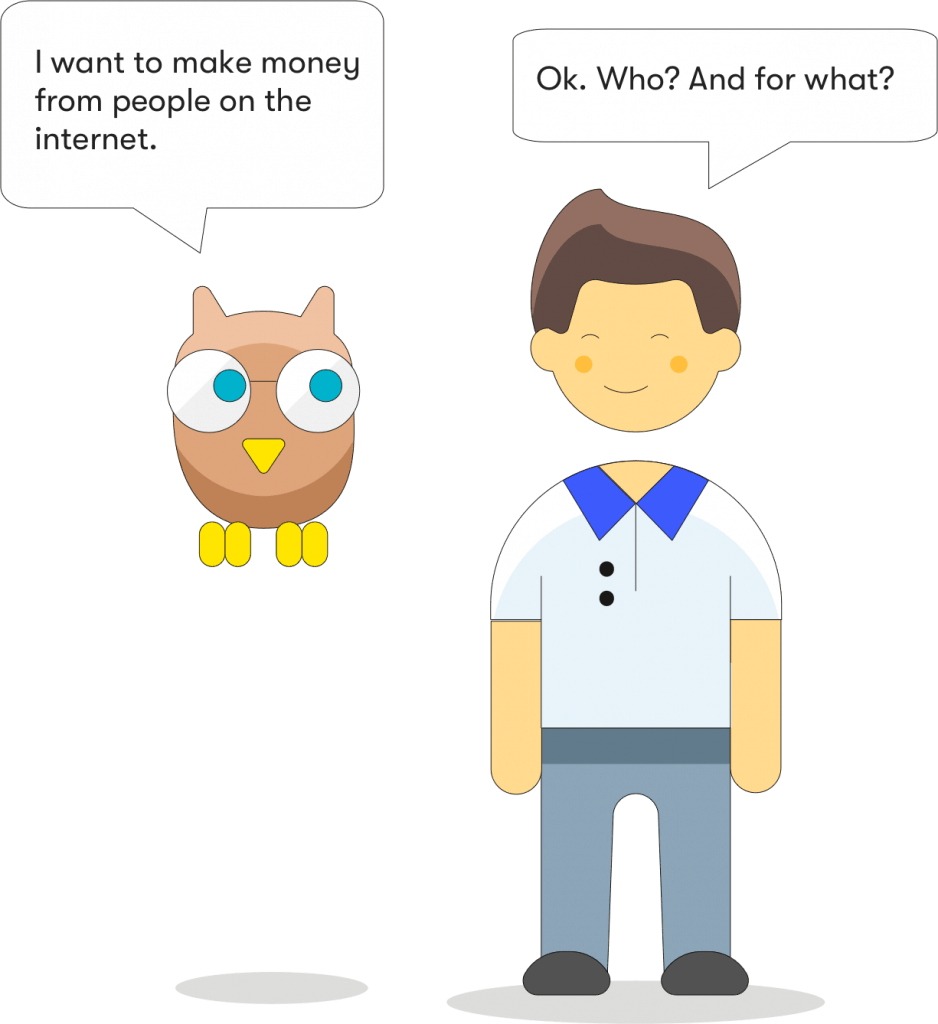
It’s important to choose a topic and figure out who your reader is first!
Knowing your blog’s purpose helps decision making!
“Find your why!” is corny, but it CAN actually be helpful to think through while choosing a topic to blog about! Speaking of which…
First off, nothing is permanent! If you end up choosing a niche and HATING it 6 months from now, you can quit. It’s more like dating and less like marriage.
That said, list out 5 subjects you’re
Out of those 15, pick the topic that fires you up the most and START.
It’s incredibly important you understand exactly who you are creating content FOR.
Definition – An Avatar is a hypothetical representation of your ideal reader, or your target customer, etc. Why is this important?
Later on, when we talk about creating good content and monetizing your blog, we will talk about solving your reader’s problems. It’s the single best way to connect with people, make a difference, and sell products.
If you don’t fully understand your readers, you will not be able to connect and sell to them.
Pat has already read about blogging a bit. He’s seen a few “how to start a blog” courses or articles like this one already 🙂
But, he’s either
He wants MORE traffic, email subscribers, and monthly blog revenues!
Despite the insane amount of blog tutorials on the internet…Pat has been overwhelmed and struggles with the actions needed to facilitate growth.
Pat also struggles to find TIME to blog, as he has a day job, is a parent, or simply underestimated the amount of time it takes to run a blog.
Do You Even Blog aims to help Pat with every piece of content of our blog & podcast, and it’s built into every piece of marketing.
Choose your topic, then define your avatar.
Write and market for your avatar.
This will make it 10x easier to make money from a blog. ✅
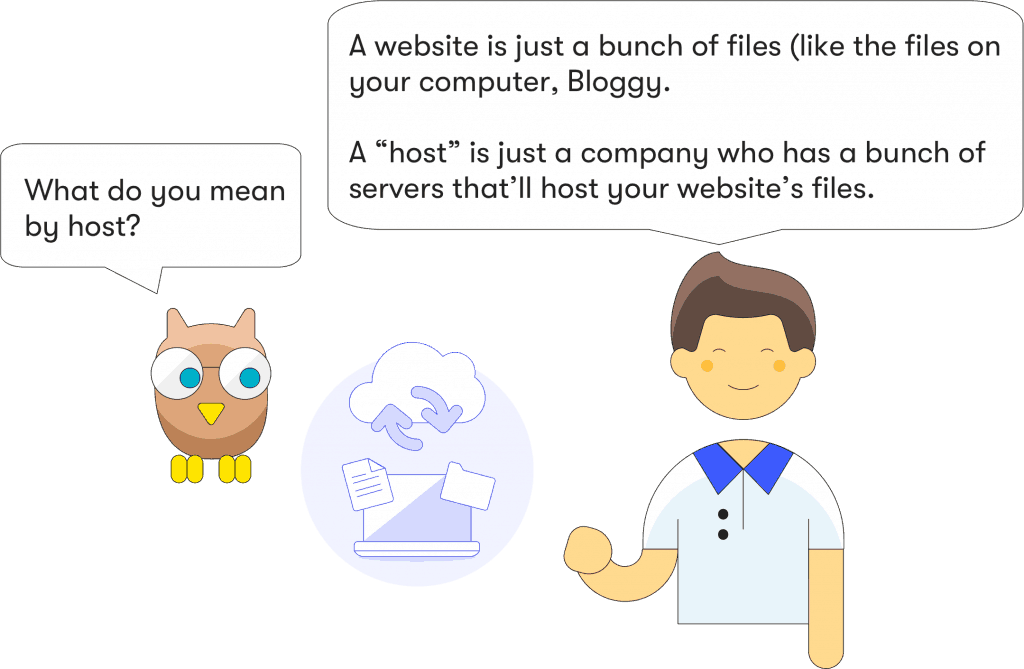
Ok new bloggers, here’s the ORDER of actions:
1 – Choose and find an available domain name, but DON’T buy yet.
2 – Settle on a platform (WordPress)
3 – Choose a “host”
4 – Purchase a hosting package and domain at the same time. (You’ll save money!)
Your blog name doesn’t need ALL of these, but the more the better.
“doyouevenblog.com” wasn’t my 1st choice, but it was brandable, easy to say, and is easy to read and type out.
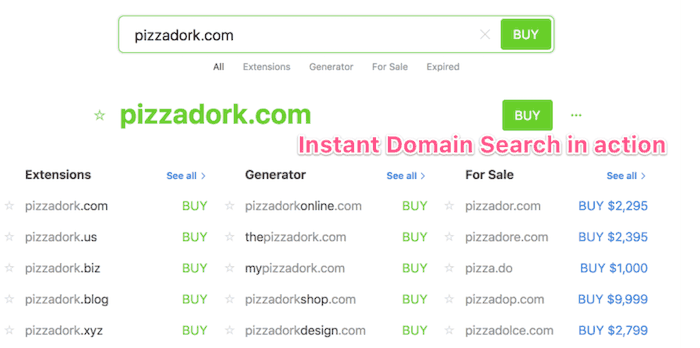
Instant Domain Name Search is my GO-TO. Start typing and you’ll see availability and suggestions pop up in real time.
You can also use the widget below to check for some available domain names right this second!👇
Note: If you grab a Bluehost hosting plan using my link (details below), you’ll get a FREE domain name! So don’t go buying one separately yet.
Assuming a domain is available for sale, it’ll run you about $10-15 per year.
This does NOT include hosting, which is more. However, we’ll show you how to get a FREE domain with your hosting below 🙂
By platform, we mean the actual software tool you’ll use to create and publish a blog.
Here are the most common blogging platforms:
My recommendation? Use the WordPress software hosted on your own 3rd-party hosting account.
WordPress powers 30-40% of the entire internet, for good reason: It’s easy to set-up, use, and offers the most flexibility for design AND monetization plugins!
This is the cheapest AND most flexible option!
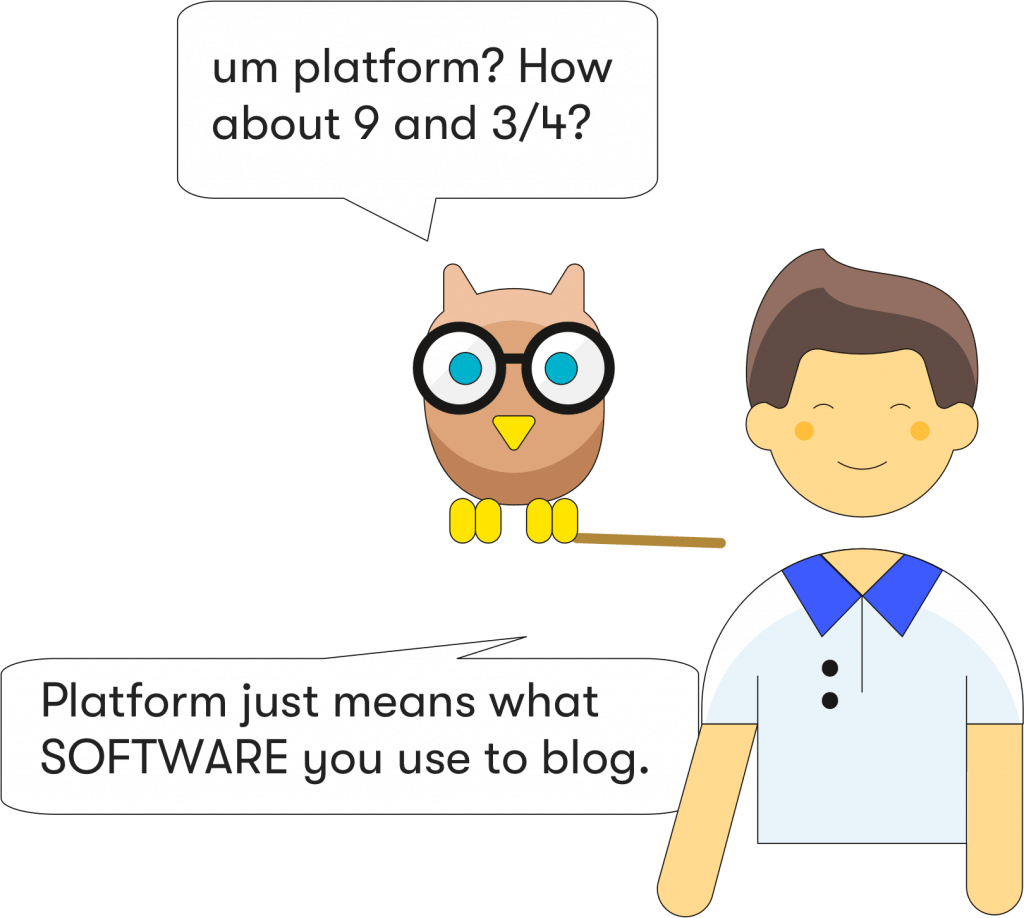
When bloggers refer to “hosting,” we are referring to disk space essentially.
A website is nothing but a bunch of files–like files on your computer–and these need to be hosted somewhere.
That’s what you’re paying for.
Anywhere from $2.95/month to $30/month and more!
I’ve actually worked out an exclusive deal with Bluehost for those who use that affiliate link–you’ll grab a $2.95/month rate! (I think it usually starts at $3.95/month).
Every bit counts!
“Shared” hosting means there will be other websites hosted on the same server.
This is totally cool!
[lasso ref=”bluehost” id=”7431″]
Always choose the cheapest shared hosting plan to start with–you can always upgrade later once your traffic starts going up.
For new bloggers, I recommend Bluehost for 4 huge reasons:
I recently went through the new blog set-up process again…
And Bluehost’s pain-free experience blew me away.
When you sign up for a new account–they will install WordPress for you automatically.
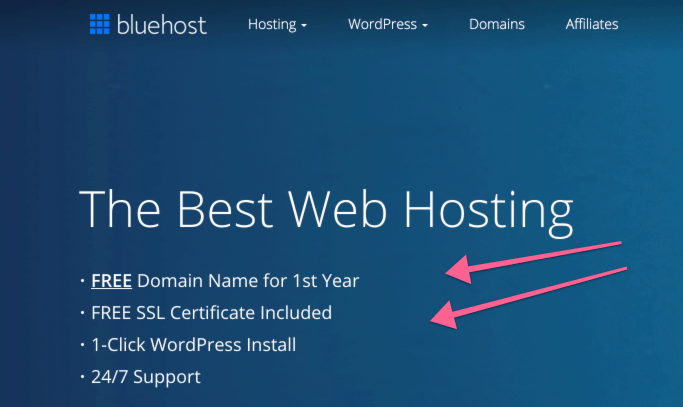
This is valuable if you’re new and have zero experience in cPanel, website backend settings, etc!
Bluehost is the best, quickest, and cheapest host if you’re just learning how to start and grow a blog.
Click here to use my Bluehost affiliate link, and you can follow the section below to have a working blog published within the next 15 minutes.
There are several platforms that allow you to blog for free, including:
However, you will NOT get a custom domain with free blogs–you’ll have .wordpress.com or .blogger.com on the end of your url.
Example: www.yourblogtitle.wordpress.com
You’ll also be limited in terms of themes & plugins.If you don’t care and just want to write today and have it published, go with Medium!
If you want a bit more control over the design, go with a free WordPress.com blog.
Here’s a start-to-finish video of me setting up a new blog–in 60 seconds!
The full details are below.
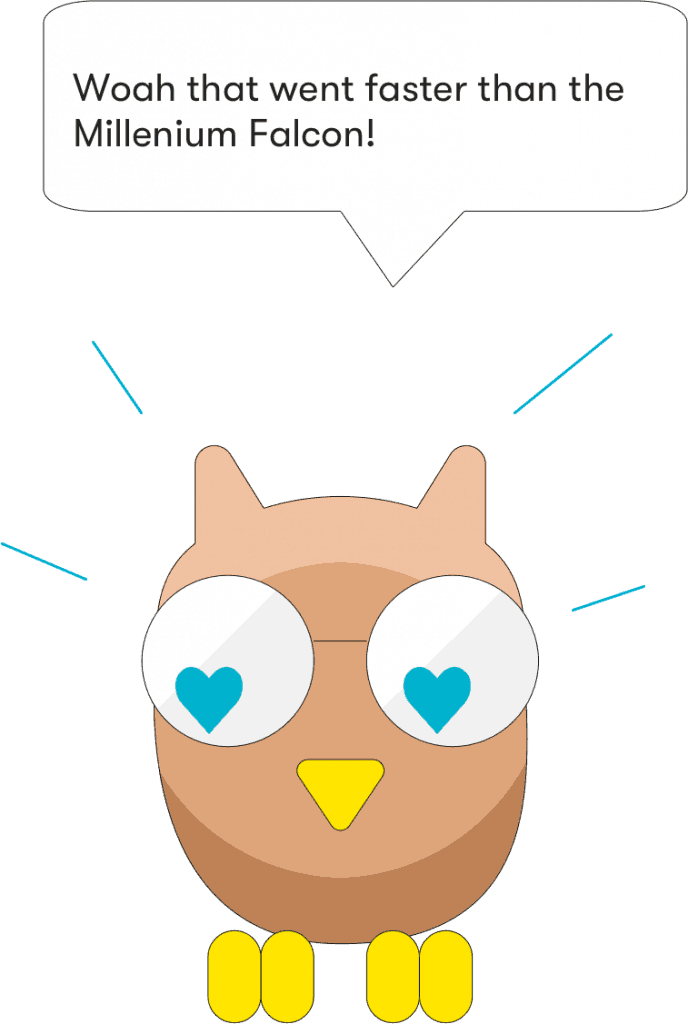
For this tutorial, I purchased a brand new domain to use as an example–theparentline.com!
Step 1 – Head to Bluehost and click “get started” on the homepage.
Choose the basic hosting package. You DON’T need those extra features right now! You can always upgrade later 😉
[lasso ref=”bluehost” id=”7431″]
Then, enter your domain name you found already.
Step 2 – Enter your contact details and select extras for your blog.
Enter your info, but CHANGE some of the pre-selected extras.
YOU DON’T NEED THESE.
The only one you MIGHT want to grab is the $0.99/month domain privacy protection. This will simply hide your name and address in the domain database records (which is public information).
Other than that, just pay for 12 months. It’s worth sacrificing the $1/month for a cheaper upfront payment.
3 – Enter CC information and pay.
THAT’S IT.
Bluehost will take care of pretty much everything else. 🔥🔥
They’ll also hook you up with a temporary domain and log-in so you can get started on your site! All changes you make immediately will be carried forward to your real URL once it’s ready.
They’ll send you an email with some advanced information. File it away in case you need it in the future.
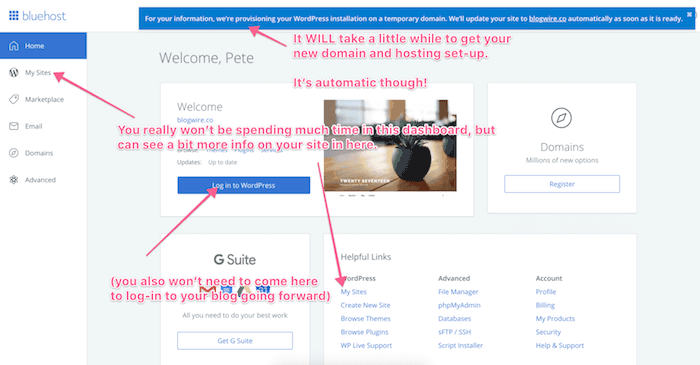
You don’t need your BlueHost dashboard to log-in to your blog’s WordPress dashboard–but rather navigate to yourblogurl.com/wp-admin.
I’d suggest adding it as a bookmark. I’ve got doyouevenblog.com/wp-admin on my bookmarks bar.
Important Note: It will take Bluehost a few hours to get your site set-up, but they’ll give you a temporary domain name in the meantime.

Click “log in to WordPress” in your Bluehost dashboard.
You should be automatically in your dashboard, at which point you’ll go to the top-right corner and hover over “admin.”
From there, you can click to update your email and scroll down and click “generate password.”
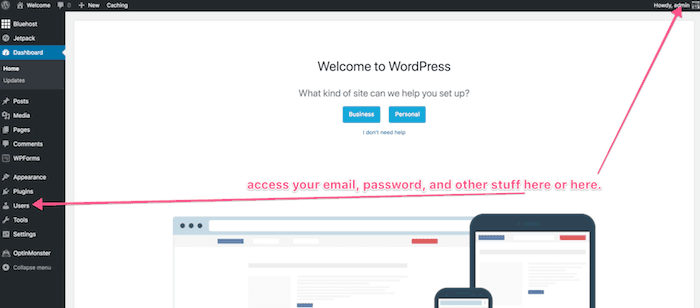
NOW you should be able to log-in the normal way to your WordPress dashboard.
(Note: At first, you’ll probably be redirected to your temp domain site until BH finishes your install)
cPanel is a dashboard software that most hosting providers use, and is what you use to access the actual files of your website, set up email addresses for your domain name, and much more.
If you’re going with another host like Namecheap or Siteground, you’ll use cPanel to install WordPress!
I made a video on how to install a WordPress blog via cPanel here!
If you choose Bluehost, you won’t need this right now.
But if you do need it, you can click “advanced” on the left menu in your Bluehost dashboard 😃
Before we choose a blog theme and design/customize it, let’s take a quick tour of your blog!
Note: WordPress is like riding a bike–you will get frustrated and overwhelmed at some point, but it gets way easier once you learn it!
Here’s a full video walk-through (25 minutes) 👇
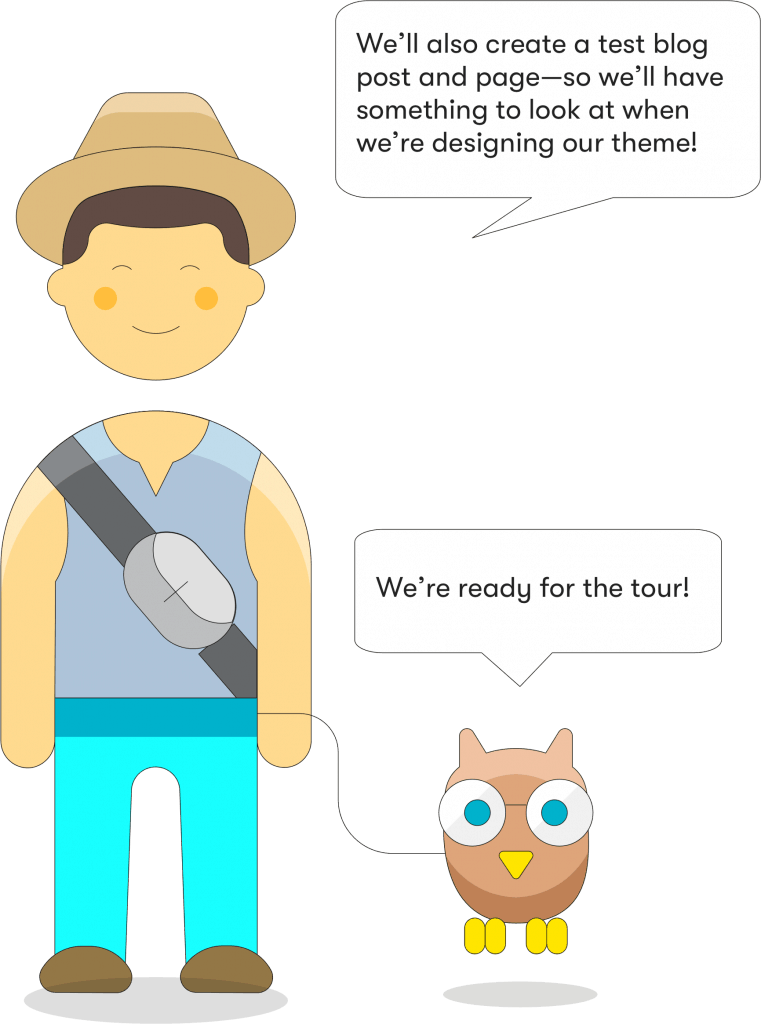
Your blog name at the top – This will take you to your homepage! (Once you’re there, the same button will take you back to the dashboard)
Posts – Here is where you create and publish new blog posts, view all published posts, and manage blog categories.
Podcast – You won’t see this on YOUR dashboard, but this is an important point: The side menu in the dashboard will eventually show the settings for various plugins 🙂
Links – Ignore this. You might not ever click this.
Pages – Similar to posts, here’s where you create and manage your pages, such as “About Us” or “Start Here” or “Contact,” etc.
Comments – When people comment on your posts, they’ll show up here for you to approve, deny, mark as spam, reply to, etc.
Appearance – Where you customize the look of your site, your theme, and menus. More on this in a below.
Plugins – Plugins are little add-ons to the WordPress system that perform various functions. We’ll dedicate an entire section to these below.
Settings – Controls broad settings for your website. We’ll dive in here in a second.
It’s time for every new blogger’s favorite part of the process…
Building an awesome looking website!
Our best piece of advice? Start simple.
If you have no WordPress or HTML/CSS experience, stick with a WP theme you don’t have to customize a lot.

A theme is technically a folder full of files, and these files control the appearance of your WordPress website.
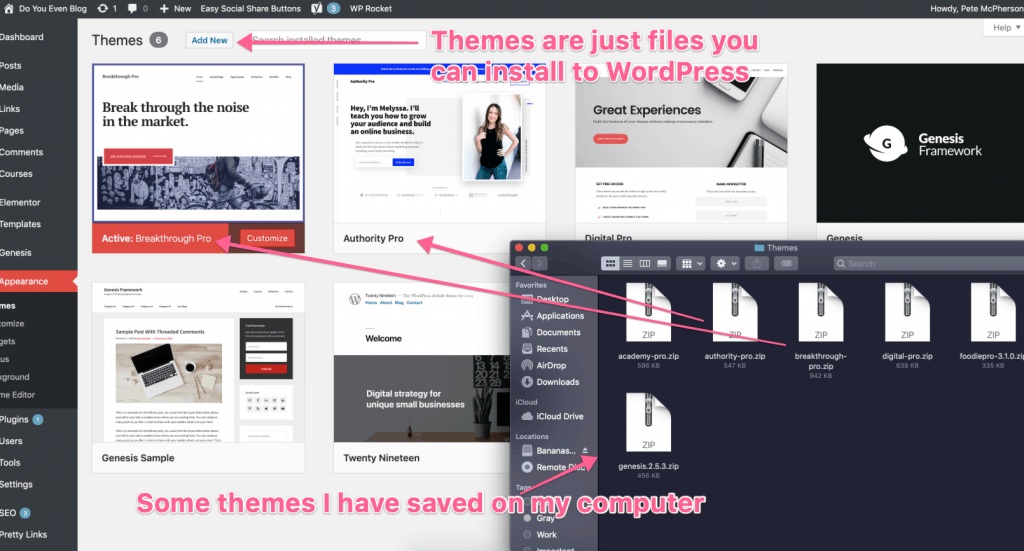
Your theme can be customized, and changes things like…
Themes can be free or paid, simple to use or built for designers and developers.
There are thousands of themes available, and you should select which one best works for you!
The theme you choose should be…
There are two ways to install themes. If you have downloaded themes from the web, you can manually upload the zip files.
Don’t extract the zip files. Upload them as is!
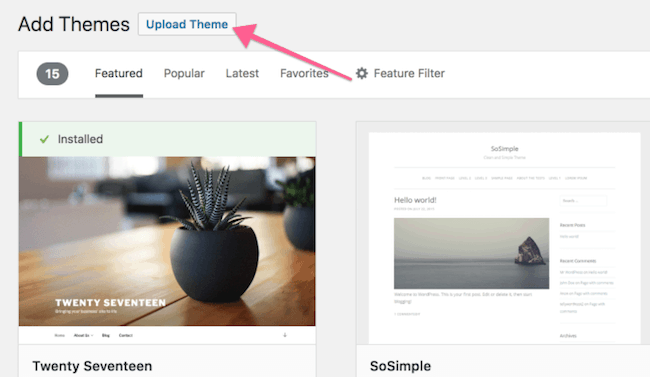
Otherwise, you can browse, select, and install themes right from the WordPress dashboard, under “Appearance > Themes.”
You will click “Install,” and then “Activate.” All themes you install will be available in your theme dashboard, ready for you to switch if you choose!

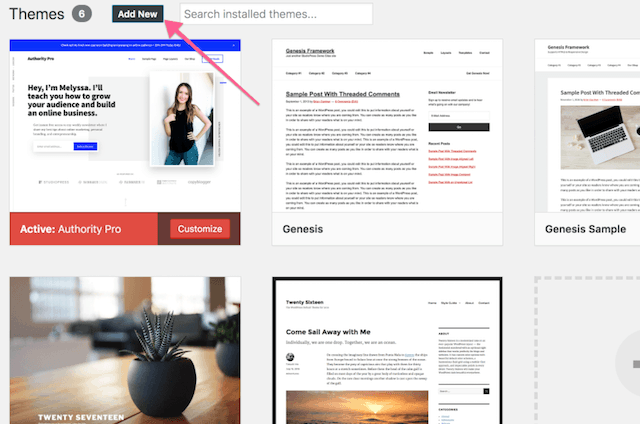
You can browse blog themes right in your WordPress dashboard, under “Appearance > Themes > Add New.”
There are also thousands of themes available from 3rd party companies all across the internet!

Recommended provider or premium themes: StudioPress.
Pro Tip: StudioPress gives a 20-30% discount for repeat customers, so purchase the Genesis framework (the base theme you will need anyways), and then purchase a theme separately.
Recommended provider of free themes: Either the default WordPress theme (literally called “twentynineteen,” or a free minimal theme from this post.
Your WordPress blog should come with the default theme already installed–but if not, you can search for it in the theme dashboard.
WordPress makes a new “default” theme each year, and they are AMAZING.
They are simple, easy to get started on and offer the latest features. More new bloggers should use them.
A quick warning on free WordPress themes for your blog (that aren’t made by WordPress)
Some free themes might include limited features and want you to pay for a “premium” version of the theme.

Pro tip for beginners: When choosing a blog theme, look for one where the preview contains a lot of white space and looks LESS fancy. These themes are generally easier to set up.
Do not use Divi!
My students have started referring to Divi themes as “dreadful Divi” as they are a pain to build–and an even bigger pain to switch themes! They also slow down your blog.
Instead, I recommend the Elementor page builder.
Interested in learning more? Check out my full Elementor Tutorial and Walk-Through!

In your dashboard, click “add new” under blog posts, add in a post title, and add in some dummy text.
As you choose different themes and start to customize them using WordPress, having test content will give you a better picture of what the theme will look like in the future–once you have actual content.

Good news and bad news, bloggers!
Bad news – Every theme is WAY different, so you’ll have to figure a lot of it out for yourself 🙁 🙁
Good news – You hopefully only have to do this process once, then you can focus on, ya know, blogging.
Head here under your WP Dashboard – Appearance – Customize.
That will bring up the live customizer.


This is where you’ll shape most of the look and feel of your blog theme.
You’ll be diving through this section in the first month of blogging, and it’s important to remember you WILL get frustrated at some point 🙂
It’s a learning experience!
Here are the customize options you should take care of first!
Site Identity
This is important. If it’s not in there already…add the name of your site under site title, and an optional tagline.
Don’t bother with the site icon for now (though if you already HAVE a logo, great. Resize it to 512×512 pixels and upload it there.
Menu & Homepage Settings
We’ll be covering this below in the “how to create posts and pages” section 🙂
Widgets
Go ahead and play around with the widgets. You’ll see a bunch of random things to choose from that won’t mean much right now.
As you start to add content, build an email list, and install plugins, you’ll figure out which widgets you should put where.
Feel free to play around with whatever other settings your theme has–but do try to keep it simple! Don’t spend days and weeks here.
Get it 95%, then start blogging.
WordPress Plugins are “add-on” pieces of software that are not theme-specific and serve a wide variety of functions.
There are plugins to help with email marketing, images, comments, design, custom fonts, and more!
You can’t start a blog without plugins, period 😃

There are 2 ways to install plugins:
Similar to uploading themes, you can download plugins from 3rd parties and upload them in ZIP format.
1 – Go to “plugins” in your WordPress Dashboard, this will show all the plugins installed on your blog!

3 – Click on “add new” at the top of that dashboard screen.
4 – This is the search function! From here you can search and browse plugins for your blog.
5 – To install, click “install now,” BUT YOU’RE NOT DONE YET. That button will eventually be replaced by an “Activate” button–you’ll need to press that too.
6 – For plugins you’ve downloaded from 3rd parties, the “upload plugin” button is at the top.
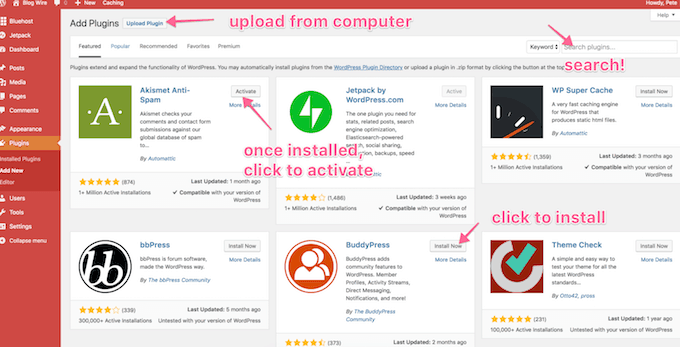
Note: ALL of these are available today, for free, searchable right from the WordPress plugins dashboard!
Google Analytics Dashboard for WP (GADWP)
We’ll use this plugin to connect our Google Analytics account (see below), allowing us to access blogging stats!
This is easily the best image compression plugin (you simply install the plugin, change 1-2 settings, and it will shrink the file size of your image automatically–making your website load faster–which is important btw).
The most widely used SEO plugin on the internet, and it’s insanely easy to set up and use.
All I can tell you right now is that you want your blog to be load really, really fast on people’s computers. You do. And this plugin will help.
UpdraftPlus WordPress Backup Plugin
What if you screw things up on the technical end and lose your entire blog? What if hackers destroy everything? Backups act as your safety net. This is the best free plugin for this.
Used to get great looking social media share buttons for your posts! You won’t get hundreds of shares overnight, but you still need to give readers the opportunity!
This is a drag-n-drop page builder–as we mentioned a minute ago.
You’ll use these to create redirects for your affiliate marketing links–making your URLs contain your blog name. We’ll talk more about this below
Over the first several months of blogging, you’ll end up installing 5-10 more plugins probably, as you discover more of your needs. Don’t think you have to get everything to 110% today! Blogging is a long-term game.
Start simple.
Additional Resources 👉👉 Here is my full list of blogging tools I use every day!

Why should we do this NOW?
You will want to see historical data, even if you don’t use Google Analytics (GA) for the next 6 months.
Bloggers LOVE to obsess over website traffic. You might even find yourself constantly logging into GA and checking your stats.
HOWEVER:
Blog Traffic is NOT a measure of your self-worth as a blogger and is additionally a USELESS blog metric on its own.
It’s a metric you’ll eventually use to figure out what’s working, and what types of content your audience enjoys best.
But to do that, you need it installed ASAP.
Sign up for an analytics account here (it’s free)
Once you sign in to your Google account, you’ll be shuffled through set-up questions.
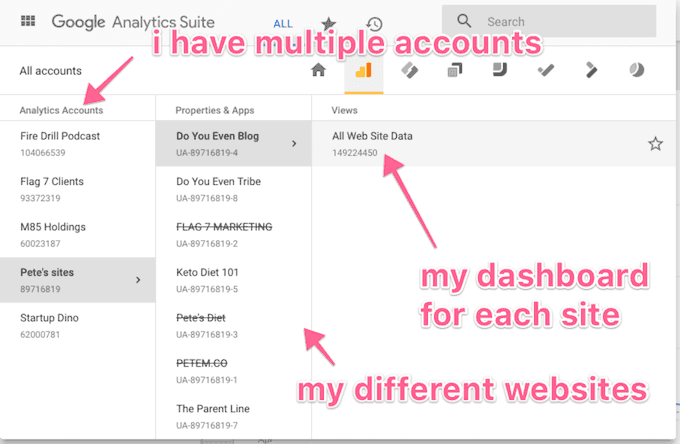
You’ll want to create your first “property,” i.e. “website.”
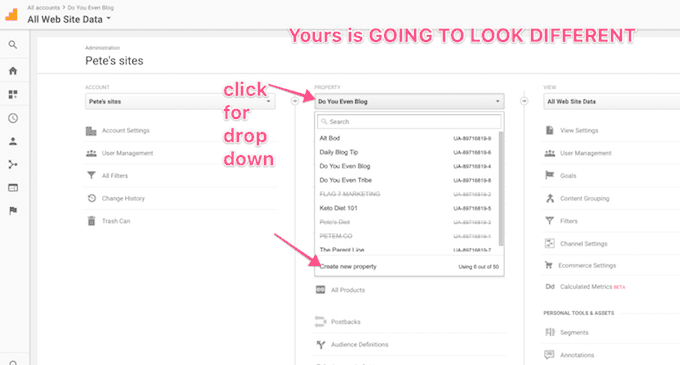
Once you’ve added your first property, you’re done in Google Analytics, but you still have to go back to WordPress, and into the Google Analytics Dashboard for WordPress plugin we installed…
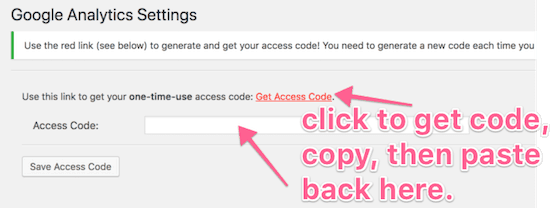
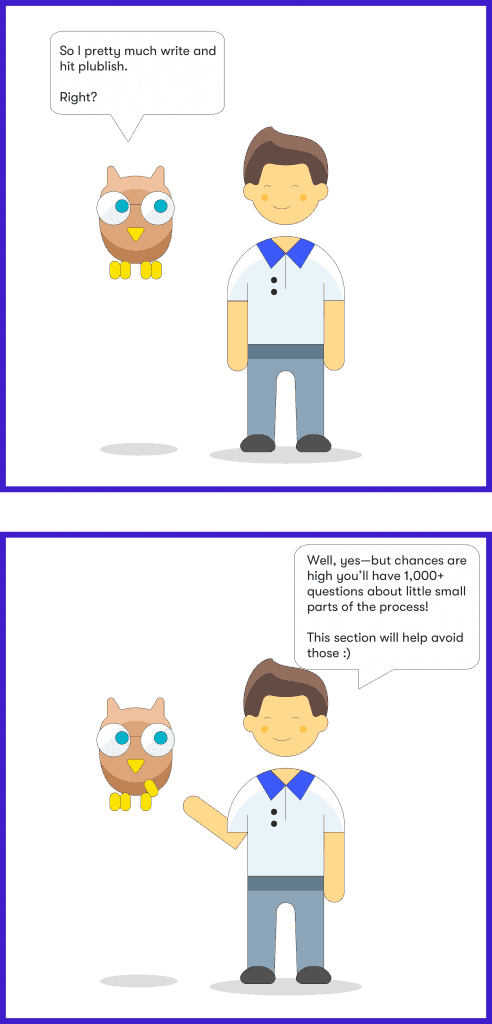
Here’s where most “how to start a blog” posts fail:
Getting your blog installed up and running is the easy part–it’s the creating content and marketing part that’s hard!
But don’t feel overwhelmed, we’ll walk through it!
Read on, blogger.
It’s helpful to create a few sample posts and pages, (you can delete them later), so you’ll have SOMETHING on your site when looking at themes.
FAQ – What’s the difference between posts and pages? Pages are thought to be static and NOT attached to any particular date in time. Posts are dated and will show up in your “blogroll” (more on that in a second).
Here’s a basic tour of publishing a post. (and below that is the blog post dashboard)
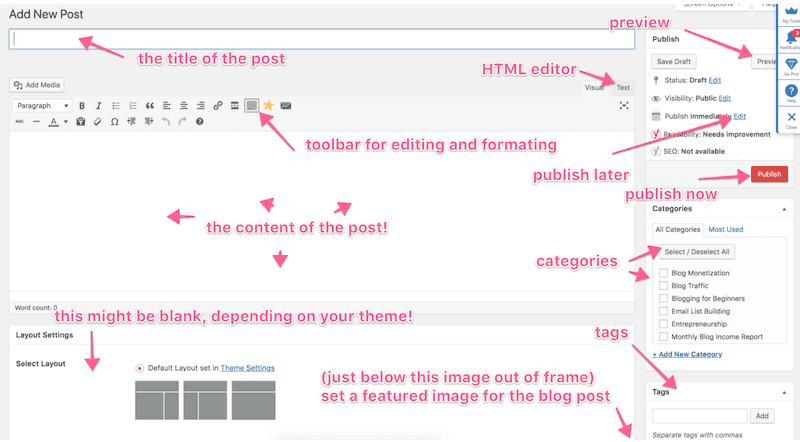

Blog pages are similar, but often have different features depending on your theme.
If you have’t already done this, I’d suggest you create:
Then create your first menu!
A few years ago, WordPress relased an optional, new version of their blog post editor!
If you’re starting fresh–Gutenberg is actually your default editor!
Go read this post for my Gutenberg tutorial (but it’s actually pretty straightforward for new bloggers 👍)
Menus are incredibly important to help your blog readers find their way around–and it can also be helpful to have a menu created BEFORE you start customizing your theme
(So you can see what it looks like)
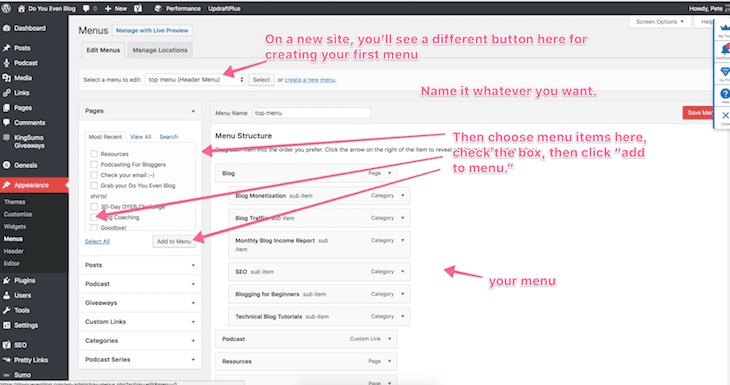
You can add the pages you created, individual posts, categories, or custom links to the menu.
NOTE: You’ll still need to DISPLAY your menu once you’ve created it. You can do this under the WordPress Customizer, simply selecting the menu you just named and created.
NOTE 2: Many themes have different “menu locations,” such as one in the header, one in the footer, etc.
If you want, you can create different menus just for the different locations!
You have two options for what to display on your blog’s homepage.
Blogroll = Shows your blog posts on the home page, beginning with the most recent.
Static page = Shows a welcome page of sorts as your homepage (you can choose to show any of your WordPress pages).
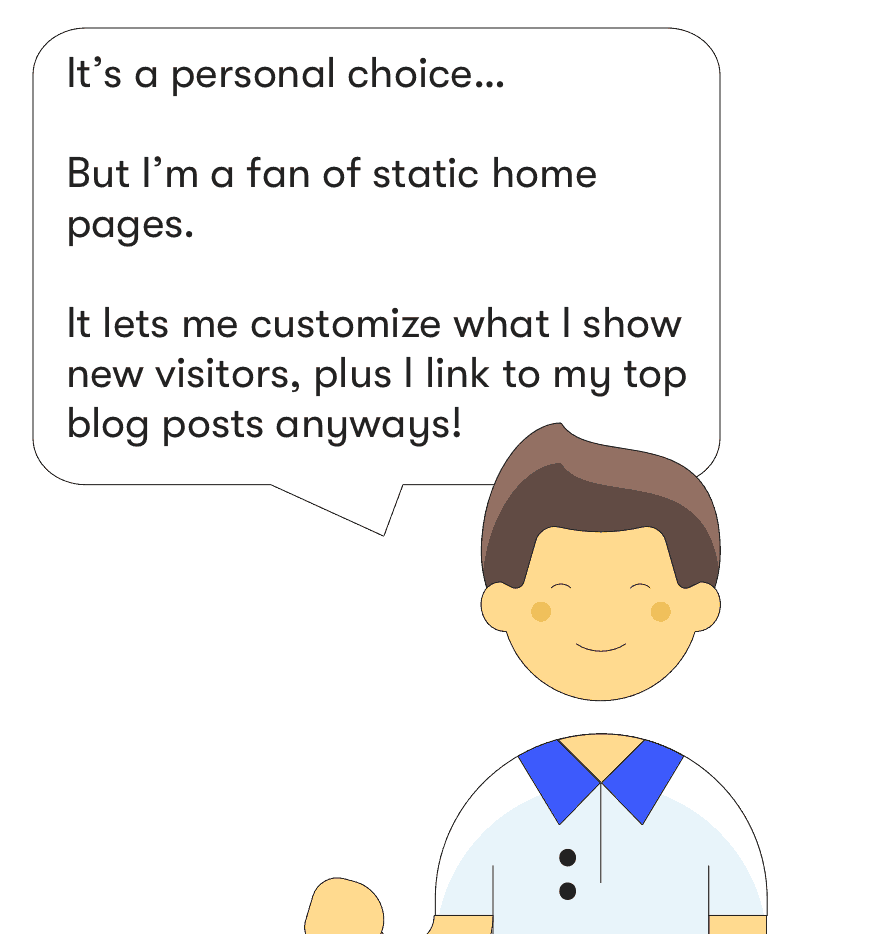
Remember when we created pages named “home” and “blog,” and left them blank? This is why.
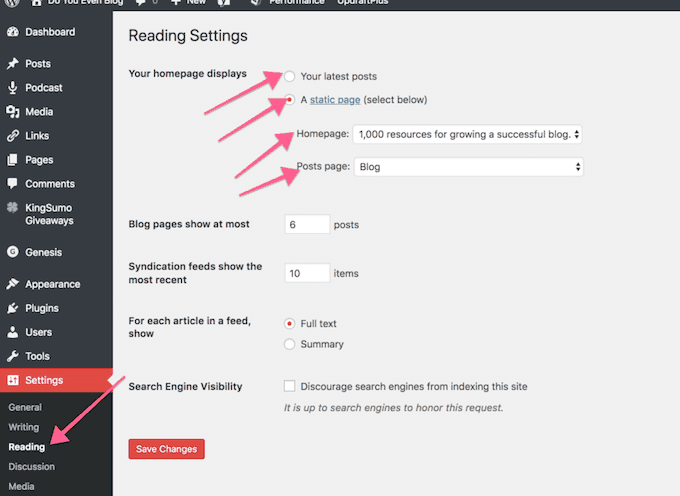
Feel free to assign your “home” and “blog” pages you created to see what it does.
There’s no right answer, but if you’re just starting out, I’d recommend sticking with the blogroll 🙂
You’ll hear those words often from people like me, but what does that actually mean?
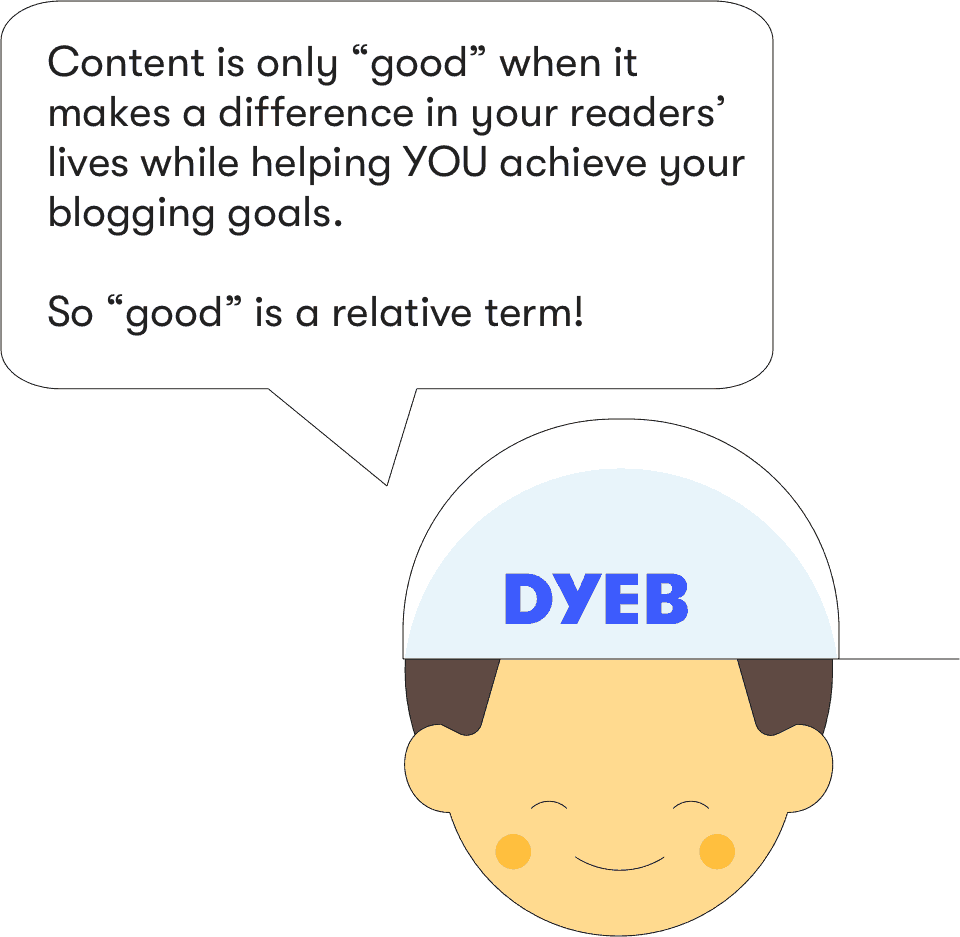
It takes time. Prepare mentally for that.
Your content will be “good” when it serves your blog’s purpose and accomplishes your goals.
Are there typos or poor grammar? Is the prose readable and conversational?
Is it formatted correctly?
Are there enough line breaks, images, and sub-headers to make it easy to digest and/or skim?
NOBODY likes “walls of text”
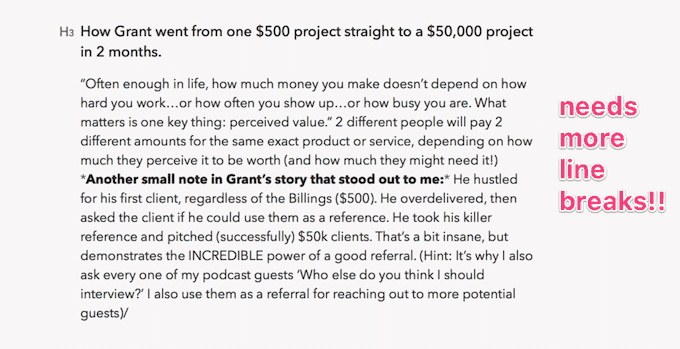
Do you have an enticing intro and headline?
It doesn’t matter how good your content is if nobody clicks through your headline! Click here to learn how to produce awesome headlines using a headline analyzer.
Are your facts straight? Are your examples/metaphors relevant?
Put another way, do you actually know what you’re talking about? (Important if you’re trying to teach something).
Does it present a unique take?
Do you present any original ideas, stories, or theories, or is everything basically found elsewhere on the internet?
Have you infused passion, opinions, or idealism into the content?
Do you have something to say?
Are there share buttons?
THERE MUST BE SHARE BUTTONS.
Is it a good fit for your audience?
Will it connect with (or attract) your target reader?
It is something people want or need?
Be honest, does anybody want to read this? (If so, who and where do they hang out online? #marketing)
Remember: the quality of your content will improve over time, and the growth is directly related to how much “practice” you get. Write a lot!
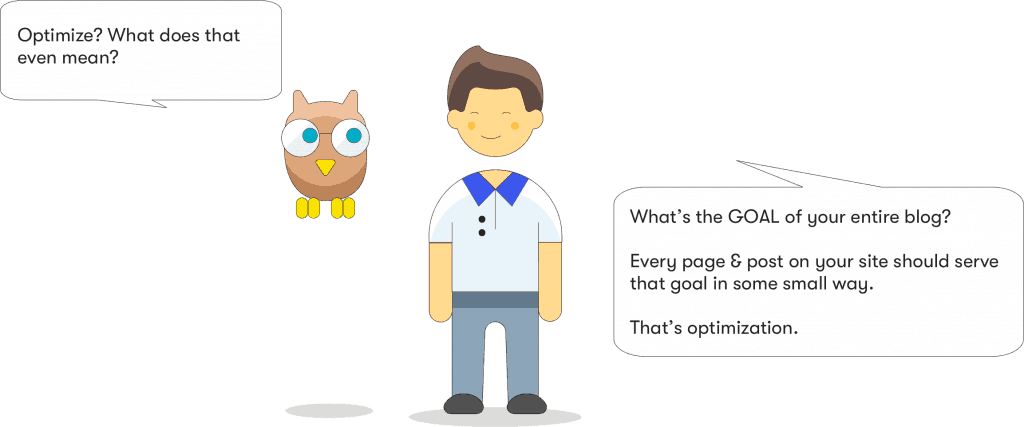
Note: You should optimize ALL your blog posts and pages around your goal.
Is your goal to sell e-commerce products? Or to get people on your email list?
EVERYTHING on your site should be designed to funnel people to this goal.
That said…
Over time, your home and “about” pages will be the most visited pages on your entire blog.
A good home page might have a:
A GREAT home (and about) page will have all the above, AND the following:
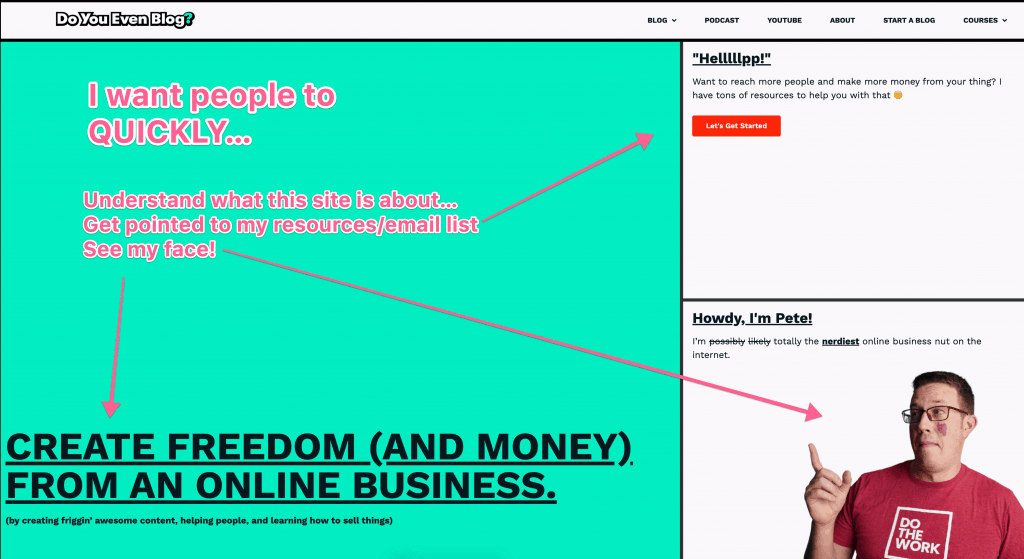
Where should you put this information?
Your home and about pages exist to sell people on why they should follow YOU and reinforce what they’ll be learning on your blog.
If you’re interested in learning more about how to brand your blog, check out The “What Why What” Formula For Nurturing True Fans.
Sometimes blog post ideas just flow in your brain–and other times you’ll question every topic you’ve ever thought of.
This is normal…
…but the pro bloggers make blog post ideas into a repeatable system–called a content strategy.
Let’s start blogging with those systems now…
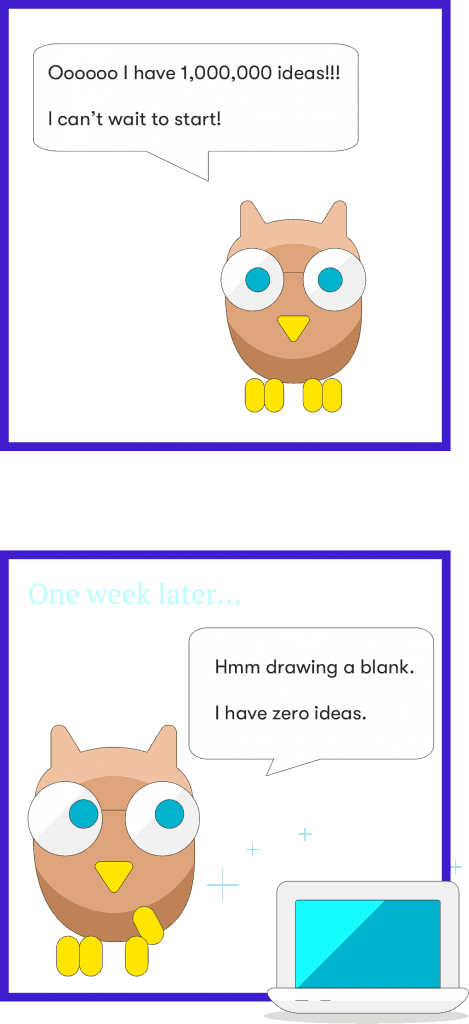
For random topic ideas that come out of nowhere, it’s important to have a “place” to capture those ideas for later, like an app on your phone.
However, you can also actively come up with ideas, too!
Method 1 – Prompt blog post topics with questions
Method 2 – Use categories and sub-categories as topics.
First, lay out your 5-10 blog categories. If you need help, check out this post.
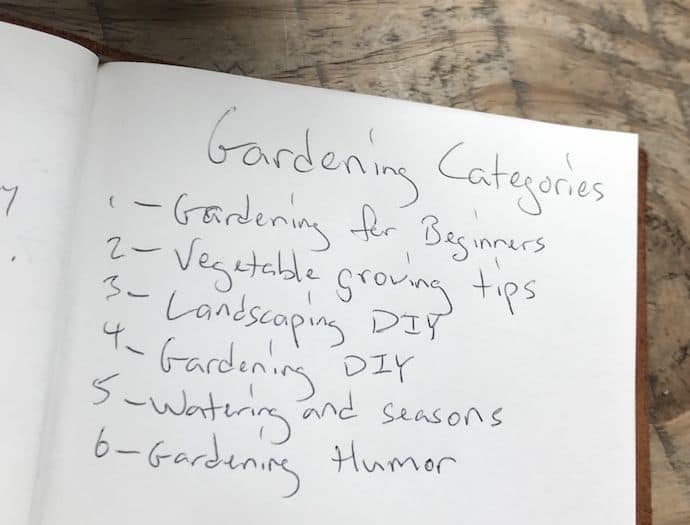
If you can’t think of your categories, go Google your blog’s competitors!
Example: Google “best personal finance blogs,” and dig through the results, noting their categories and sub-categories.
From there, brainstorm 2-3 sub-categories for each category.
Use these to brainstorm individual blog post topics.
Sometimes it’s easier to generate post ideas when we’re constrained to a specific topic or sub-topic! That’s easier than fighting a blank page.
Method 3 – Go to another post and break out one little detail.
Open up a previously published post, and find one section to dive deeper–creating a separate post just for that!
Method 4 – Use Google and Pinterest “suggestions.”
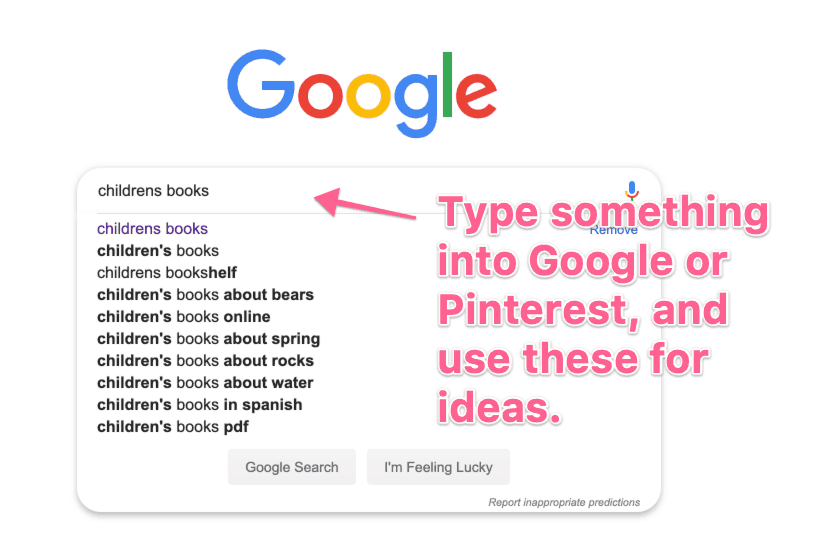
Just type “seed” keywords into Google or Pinterest, and use their search suggestions as blog post topic ideas.
This process is basically “reverse-engineering” your blog goals.

Start with the end in mind.
Generate a ton of ideas first, then organize them onto the calendar based on your goals!
Further reading: How to Create a Blog Plan (That You’ll Crush💪)
1HR BLOG POST is my content template & framework for producing content–and it’ll 1,000% help you save a HUGE amount of time.
It costs $27 🙂
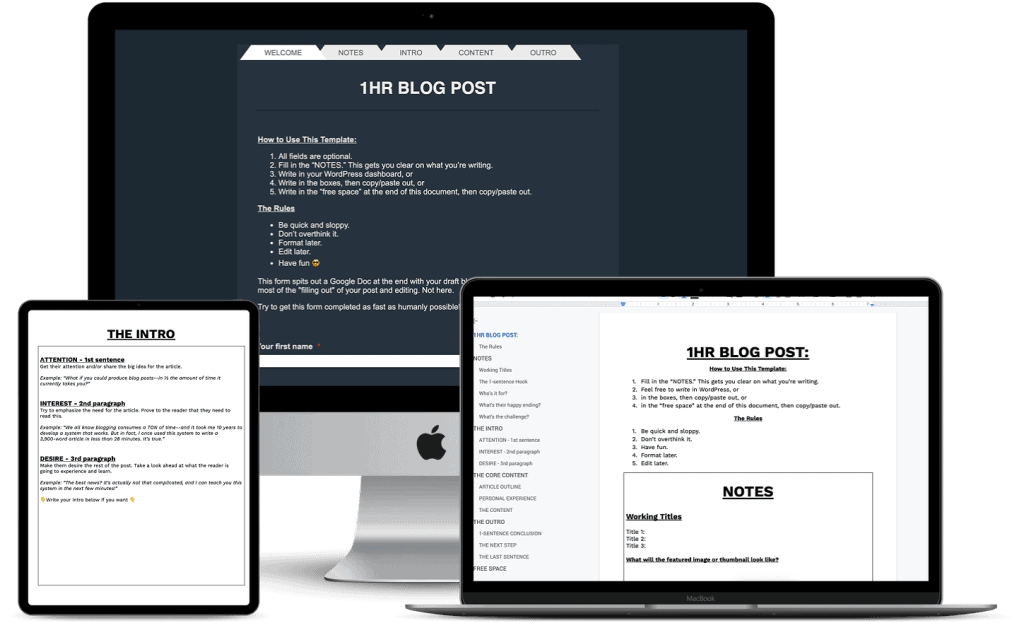
Jasper.ai is an artificial intelligence (AI) writing assistant that is a GAME-CHANGER for bloggers.
It will literally write content for you (you’ll have to give it some direction of course, and edit the output, but it can drastically speed up the writing process).
Click here to read our full Jasper AI review.
I use the Boss Mode plan for just about all content I create these days.
Part 1 - social media
So what’s the goal?
To drive traffic to your blog, which you will convert into regular readers, loyal fans, and buyers.
Honest warning: driving traffic is not easy, and will take a while to ramp up!
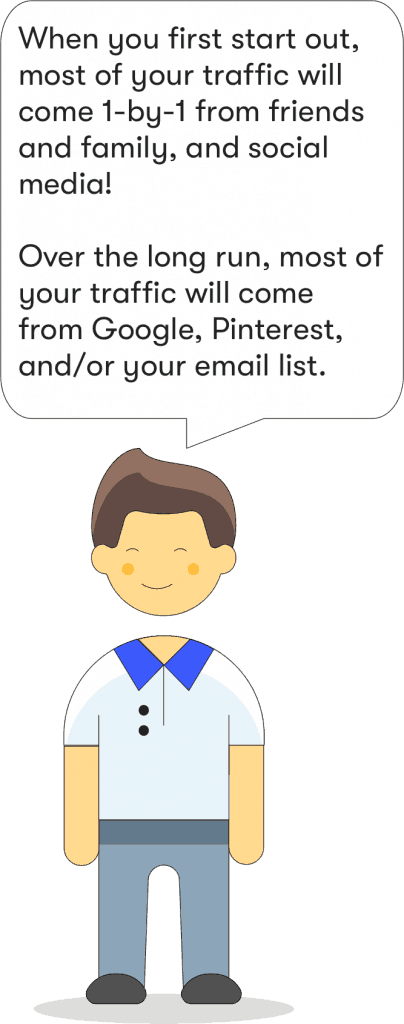
Google and Pinterest were specifically meant to drive traffic to blogs.
Everywhere else?
Not so much…
Social media channels were not designed to send people to your blog. They’re designed to keep people on THEIR SITE.
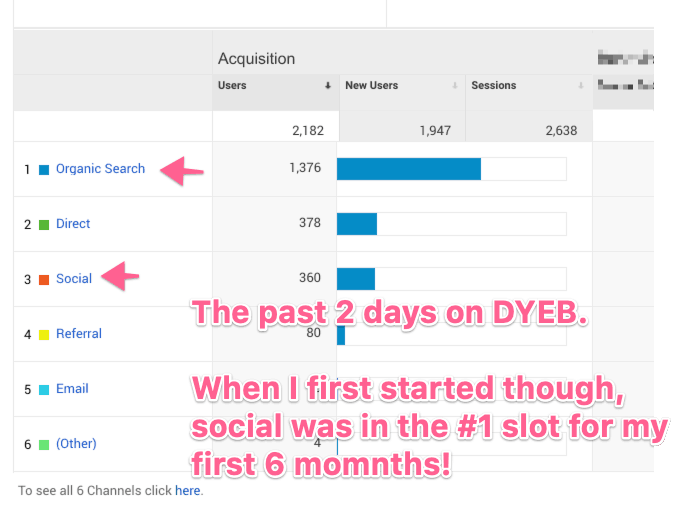
Facebook wants to keep you on Facebook and will do everything in their power to keep you on Facebook.
Any “tactics” or “strategies” we talk about is technically using these platforms for ways in which they are UNINTENDED to function.
That said, social media still plays a vital role in early blog traffic!

Simple. Where does your audience hang out?
Is your target reader on Pinterest all day? Or Reddit?
It’s crucial you target the websites and social platforms that your readers are actually using!
For some niches (blogging, personal finance, travel), Twitter is a GREAT place to start connecting with people and also drive traffic.
How to get started:
Where to find out more: How to Use Twitter to Drive More Traffic to Your Blog : Social Media Examiner
Yes, feel free to create a Facebook page for your blog!
But in 2021, Facebook has changed their algorithms to favor people staying on Facebook!
They want you to use paid Facebook advertising to send blog traffic–and use your pages & groups to interact and engage followers/fans ON Facebook.
What does that mean for us?

However, when you’re first starting, every little bit helps!
If you don’t mind doing it, share your blog posts on your personal timelines as well!
You’ll get a small trickle of traffic, but it’s not going to make or break your blog traffic.
Once you work for a few hours on a blog post and hit “publish,” the LAST thing you’ll want to do is spend more time promoting it.
So why not make it easy on yourself?
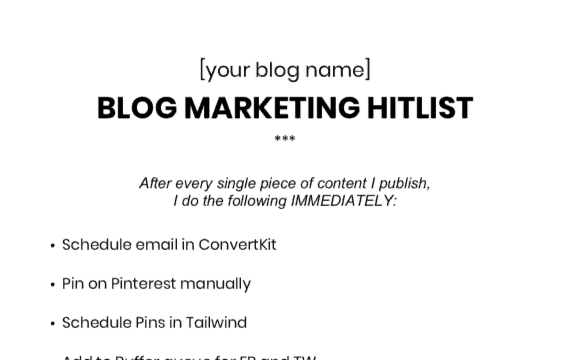
Objective: Create a standard checklist of ALL promotional duties you should do after you hit publish for post. (example above)
In the early days of your blog, social media will account for the most traffic!
But without a huge following, those traffic numbers are going to be quite small.
The blog traffic strategy I recommend: create social profiles and start promoting when you publish something new–but start playing the long game for SEO and Pinterest at the same time!
It takes time, but it’ll be worth it.
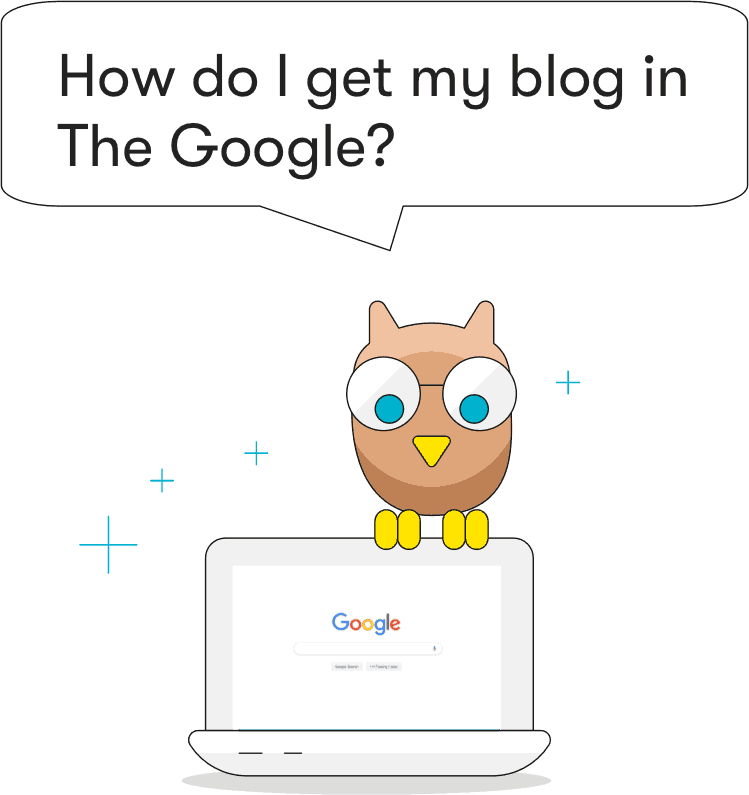
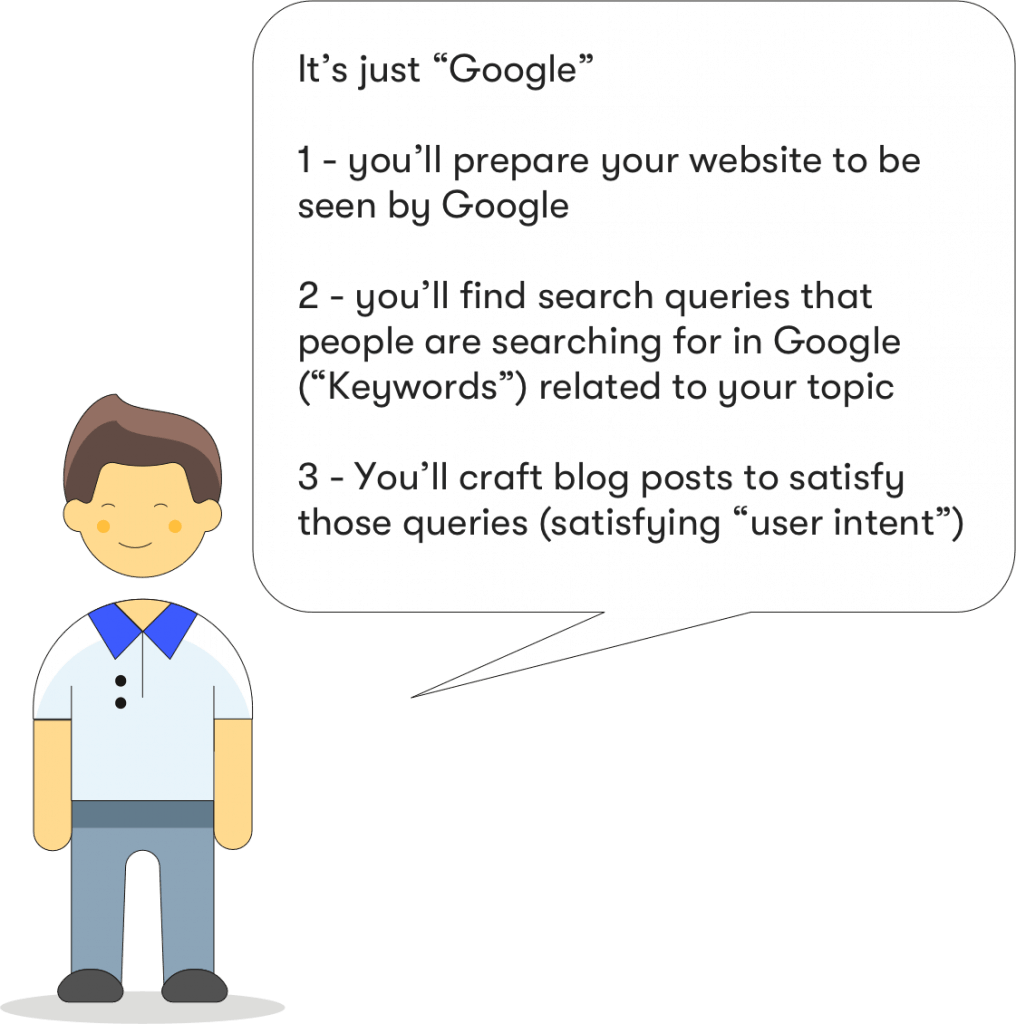
Warning: Me trying to teach you all about SEO in 5-10 minutes is impossible!
Below are the beginner blogger tactics you can start taking action on now–but if you’re interested in learning more, I suggest taking my FREE 60-Minute SEO course!
First, the basics.
Search Engine Optimization (SEO) are strategies designed to get your blog posts listed in Google search results (or other search engines) for various “keywords.”
SEO is perhaps the top way of driving traffic to your blog, even though it takes a while to make happen!

Yes and no.
It takes a while for Google to start seeing your blog as relevant and authoritative on your topic! It can be slow going….but YES, today is when to start, despite the fact that you might not see results for 6 months or more.
Yes, trying to rank in Google is among the free-est of free marketing strategies. 💰
It depends on several things!
On average, you’ll likely start to see organic SEO traffic around months 3-4, building slowly over the next 3-6 months, and then more substantial growth periods between months 12-18.
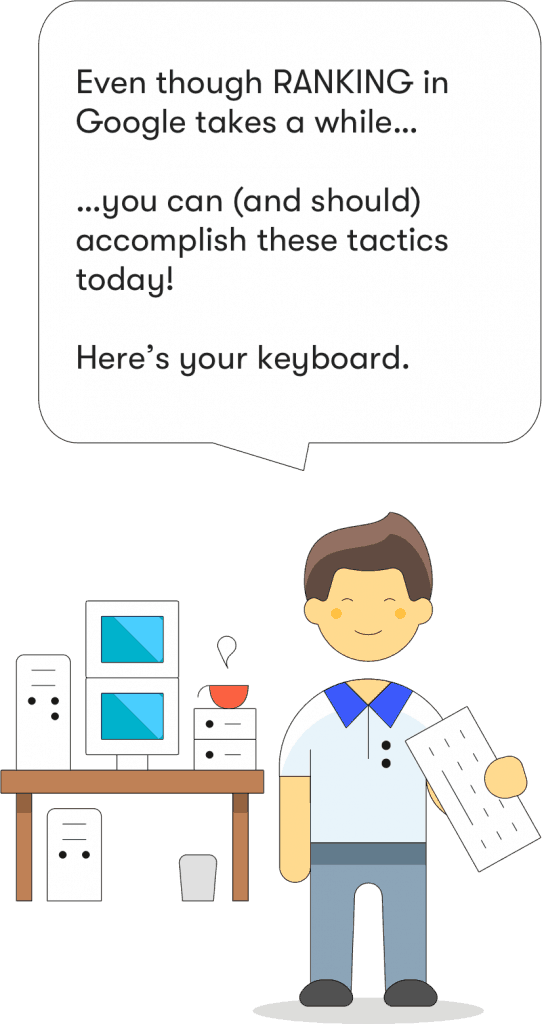
If you’re just learning how to start a blog, here are the first steps to an SEO strategy:
1 – Make sure Google knows your site exists
2 – Choose a mobile-friendly theme!
3 – Take care of your site title & description for SEO purposes
4 – Set up your blog categories
5 – Install 2 plugins to make your blog load faster
This will allow Google to “crawl” your site, searching for new posts and updating search results accordingly!
Make sure your theme is mobile friendly by using Google’s own mobile test here.
If it’s not, you should choose a new theme that is.
If your homepage is set to a static page…navigate to that page in WordPress and update the title and description in the Yoast SEO snippets box (see image below)
If your homepage is set to a blogroll, you can edit your site’s title and description in the Yoast SEO plugin settings dashboard under “Search Appearance.”

We use your broad blog categories (“Parenting,” “personal finance,” “travel”) to tell Google what your site is about!
Go ahead and create these in WordPress, even if you don’t have content yet!

We’ve already discussed ShortPixel and Autoptimize (above in the plugins section).
Google favors sites with quick load times–and these 2 plugins will speed up your blog!
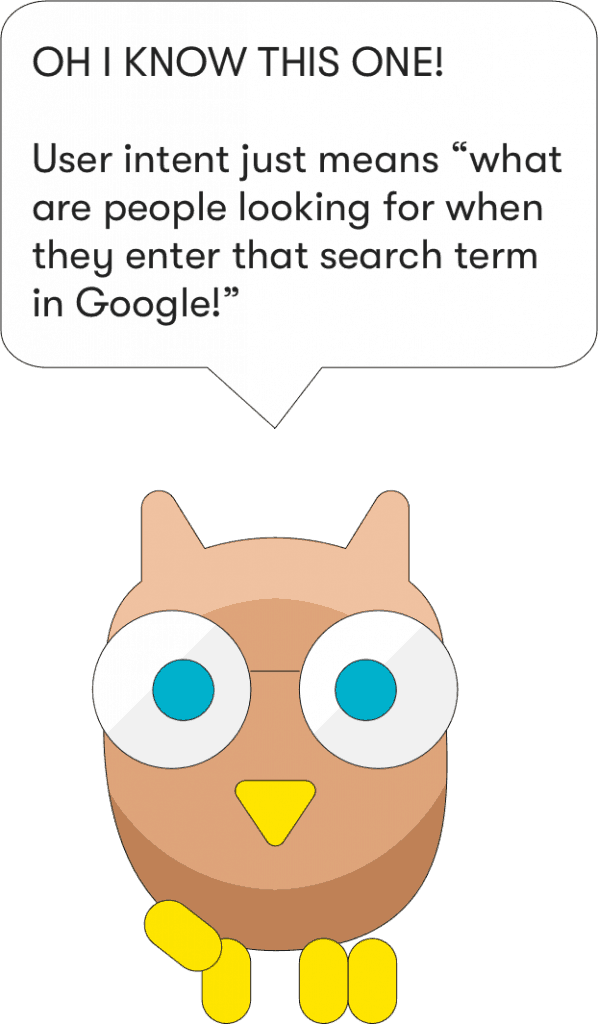
User Intent = What Google searchers really want and need to find when they enter a search query.
Google’s business model is built on MATCHING the right content to their users’ intent.
If your blog post focused on [XYZ] keyword is actually the best thing on the internet for the search term–theoretically, it should rank #1 in Google.
That’s the mindset of an SEO expert: Try to produce the best possible piece of content (and make sure Google sees it as such) for the given user intent.
I would do a very basic brainstorming session!
If you install the super-cheap Chrome extension Keywords Everywhere, you’ll also be able to see rough search estimates!
I made a 10-minute video on free keyword research for new bloggers here.
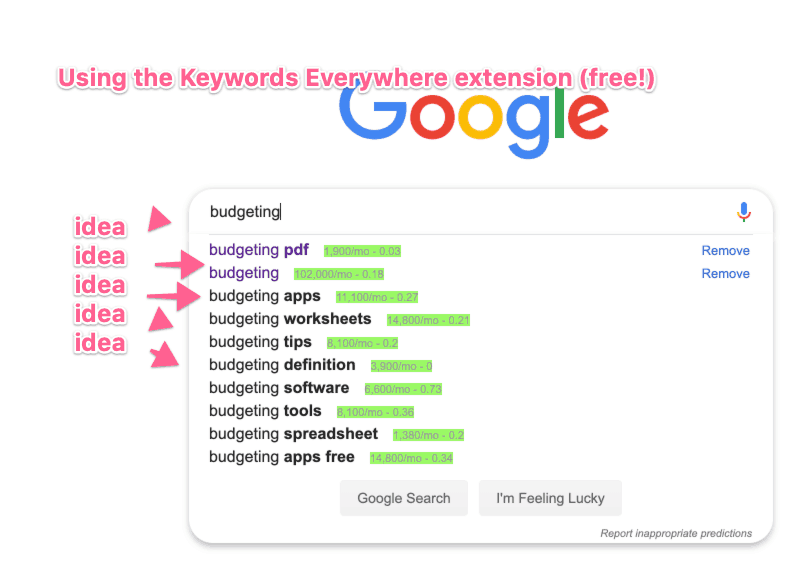
Example:
If I’m going to target “budgeting app,” I’d do a quick search in Google for that keyword, and open up the 1st 10 results.
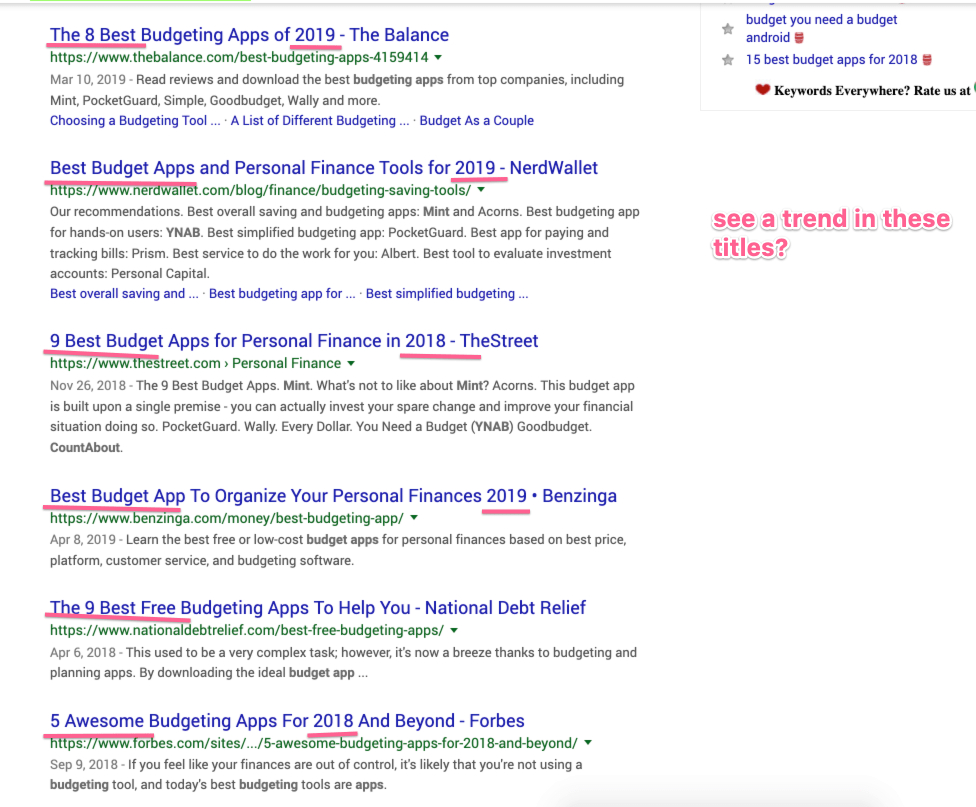
After looking at those, it’s pretty clear what Google is ranking–round-up and review posts talking about the best budgeting apps.
After knowing that, I’d head back and craft my content.
I’m not worried as much about keywords–but rather the idea behind the keywords.
Take the free 60-Minute SEO course for way more details!
What are backlinks, and are they important for SEO?
Backlinks are crucial for ranking in Google!
If a relevant and authoritative website links back to your content, Google looks at that like “Woah! This must be good! Some other trustworthy website thinks so at least!”
If I’m trying to rank for the search term “best personal finance tips” and CNN Money links back to my article…Google gives me some “link juice” (SEO lingo for “strong backlink”).

How do you get backlinks as a new blogger?
1 – You produce blog content worthy of linking back to.
Not quite the answer you wanted to hear, right? The fact is, nobody wants to link to and share crappy content, so do your best to produce excellent content! You WILL find people linking to it over time.
2 – You ask other bloggers for backlinks.
I’m not a huge fan of this, but some are. Read Brian Dean’s link building guide for more info!
So I’m here to help you start a blog, not become a master SEO overnight, so here are further resources:
👉 and last but certainly not least, go check out Ahref’s guide to beginner keyword research, it’s the best!
Pinterest is actually less of a social media channel and more of a search and discovery engine.
This means that it is in Pinterest’s best interest to send traffic to your blog.
It’s part of their business model!
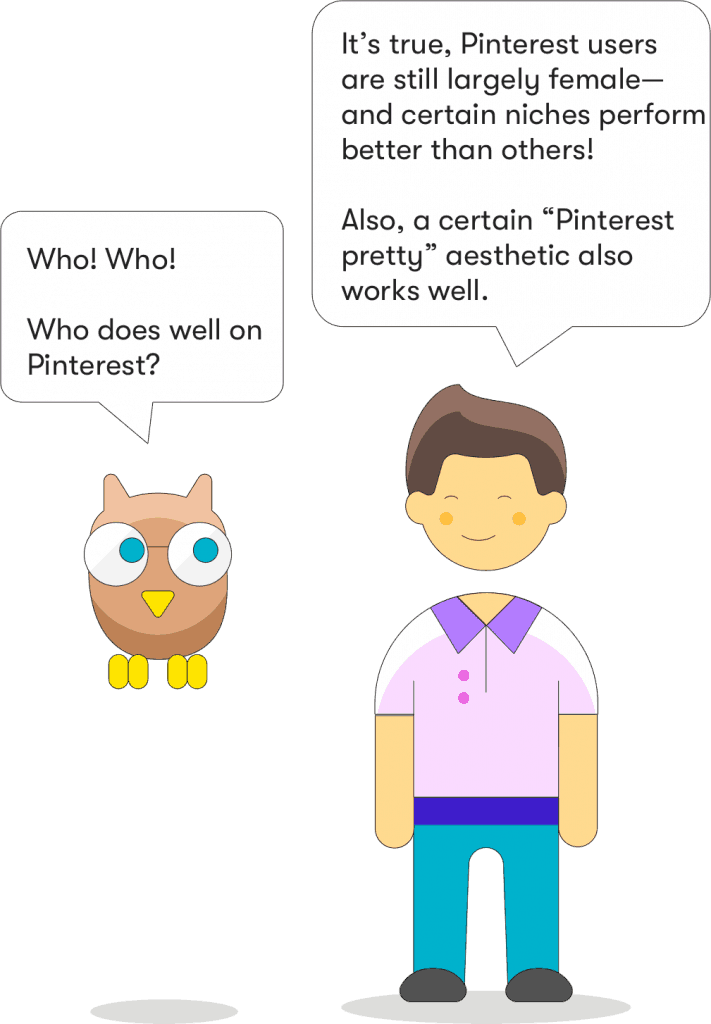
Initial steps = set up your Pinterest profile and boards, and verify your domain name
Ongoing Pinterest marketing = create enticing pins for your content, and pin them to relevant boards on Pinterest (manually or using Tailwind).
Here are the specifics, blogger!
Pro tip: How to find Pinterest keywords.
Go to the top search bar on Pinterest, and search for something around your niche.
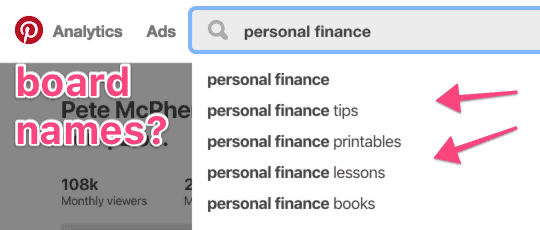
The suggestions that pop up are what other users are searching for!
This is helpful for naming your boards, as well as generating content ideas and finding keywords to include in your Pin descriptions.
Your pins should…
I suggest starting with Canva to create your pins. It’s free and easy enough to learn! You can grab stock photos from within the app, or from a site like Pexels.
Here is the pin image for this post. (Feel free to pin if you desire!)

Here is how Alisa Meredith from Tailwind laid it out for me when I spoke to her on the podcast.
Note the word “relevant” appears a lot!
Pinterest will NOT send you more traffic just because you’re spamming your pins 30 times a day. Publish the pin in boards that are highly relevant to your post’s content.
Sending an email newsletter will be your most effective marketing platform!
When you post to Twitter, Facebook, Pinterest….your content MIGHT be shown to your followers.
With an email list, there’s a 100% chance your followers will see you emailed them (assuming your email didn’t go to the spam folder).
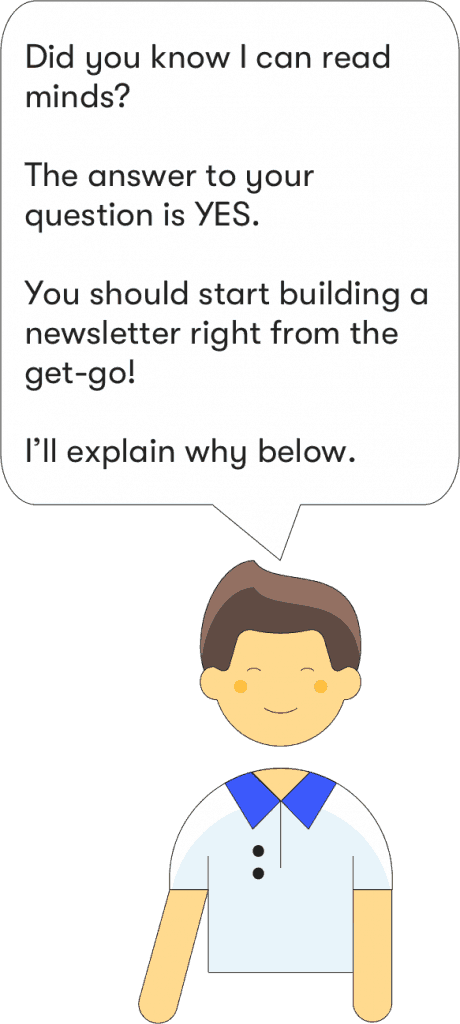
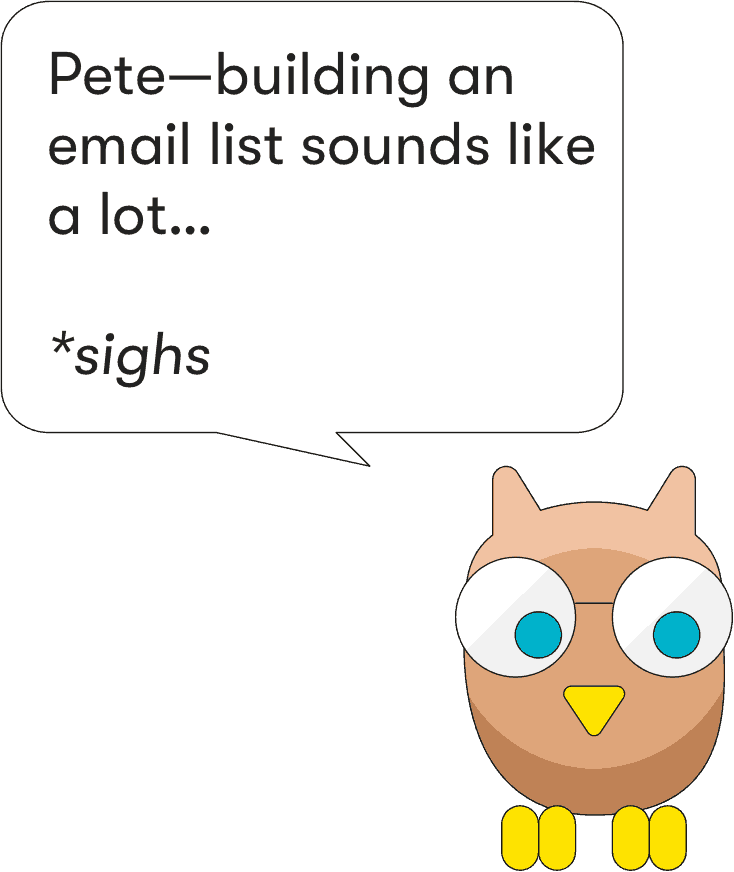
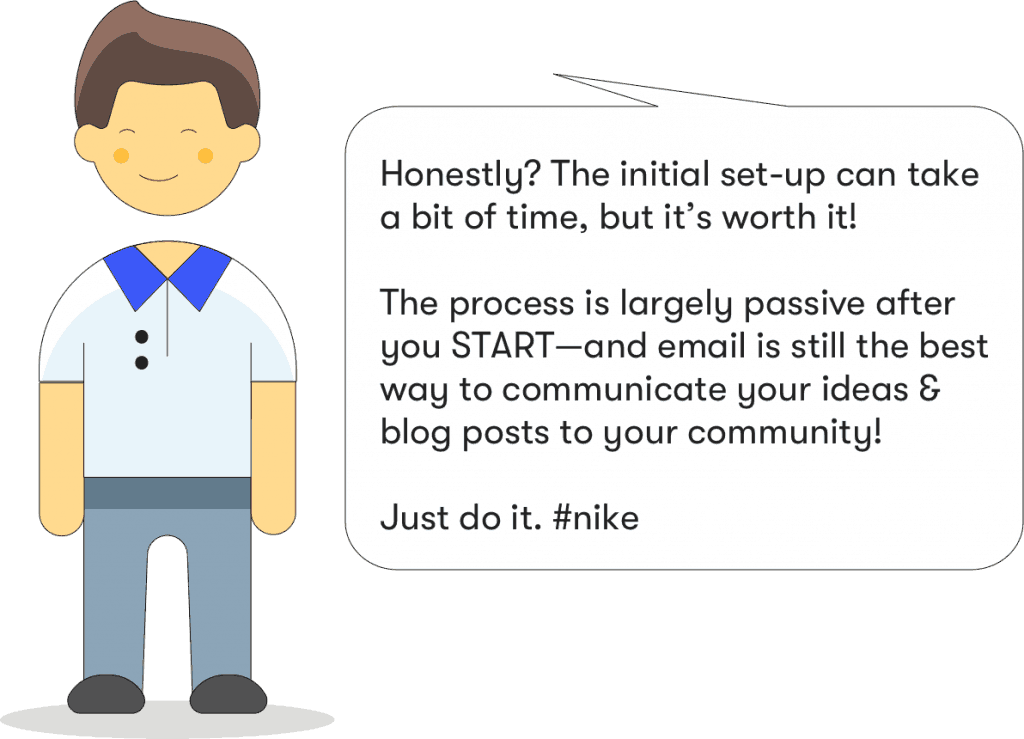
Think of your email list like dating.
You don’t want to come on too strong too quickly (spamming new subscribers with loads of emails, links, and sales pitches).
On the other hand, you don’t want to let them completely forget they’re on your blog’s newsletter! (waiting several months between emails).

Even when you’re just starting your blog, I believe you should start emailing your small following 1-2 times a month!
Do this BEFORE worrying about an email tool or opt-ins.
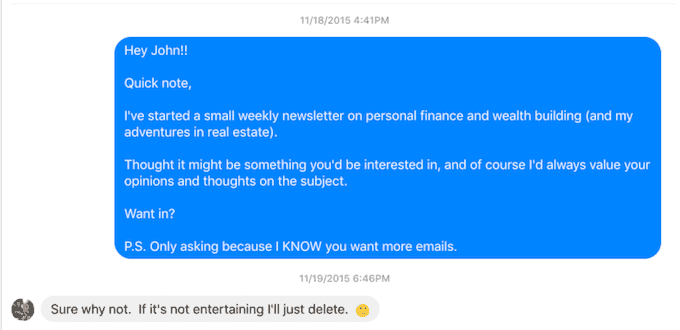
Why do this?
You’re not trying to CON your friends into caring about your blog–you’re trying to get your first bit of support.
A jumping off point. Something to get the ball rolling for a new blog. They don’t need to be super interested in your topic, they just need to know, trust, and like you!
Send them something completely honest, like…
Hey [name]!
So I’ve recently started a blog about [your topic], because [reason you’re doing this].
I thought it might be something you’d be interested in (or at the very least able to support me on). Can I include you in the first newsletter?
–your name
You’ll be surprised how this close group of 100-200 people can kickstart shares and growth.
For bloggers with less than 500 subscribers, I recommend Mailchimp (If you need more automations later on, go with ConvertKit.)
FAQ: My email provider is asking for a physical address--do I have to give it to them?
YES. It’s the law! You must include unsubscribe information and an address in your email footers.
Most bloggers I know rent out a P.O. Box so they don’t have to use their home address. I pay $100 a year for mine. You can also use a work address!
In both Mailchimp, Mailerlite and ConvertKit, you’ll need to create a form.
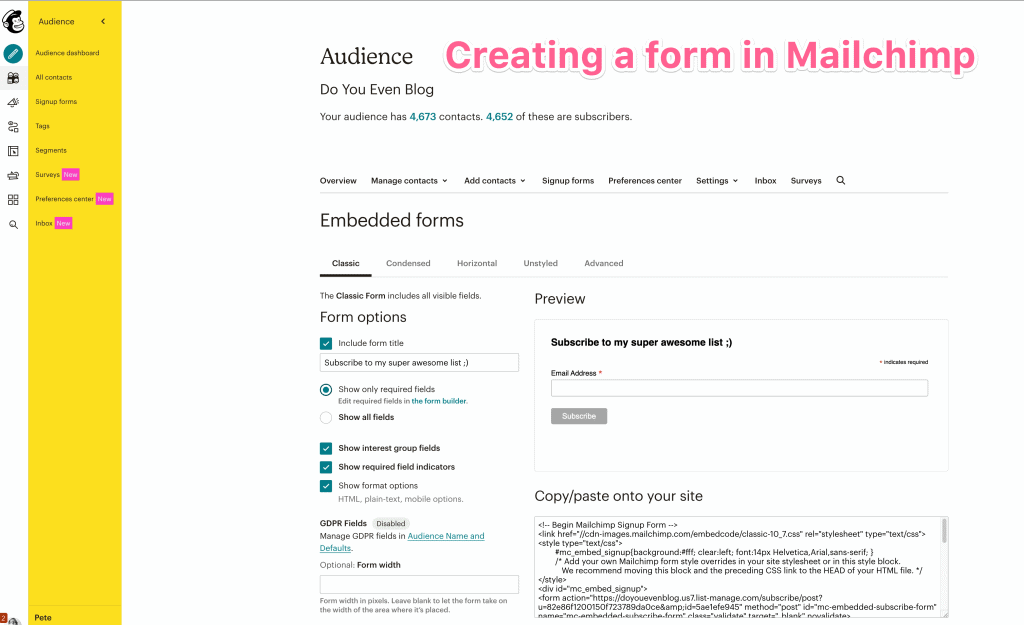
New bloggers should keep it simple! We’ll talk about what language to use on your form below.
(Also, go Google “[your email tool] form guide” to get instructions!)
There are 2 options:
Both ConvertKit and Mailerlite have WordPress plugins that you’ll connect to your account using an API key (if you’re having trouble with this, look up some documentation on your provider’s site!).
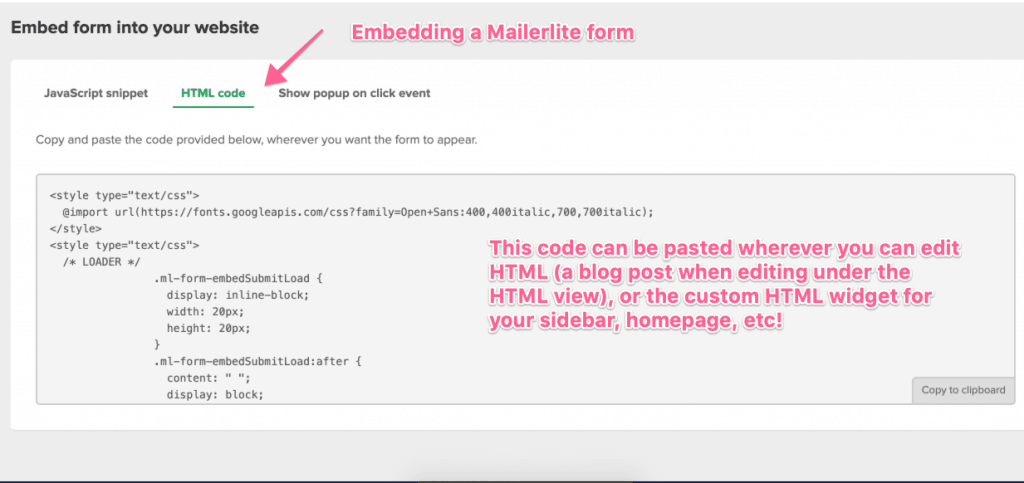
However, it’s pretty easy to copy/paste the HTML code into your blog posts, sidebars, or widgets.

Technically, you should have a working opt-in form on your new blog, which allows people to follow you via email!
But you should always test your form to make sure it works! Enter your own email and make sure it works.
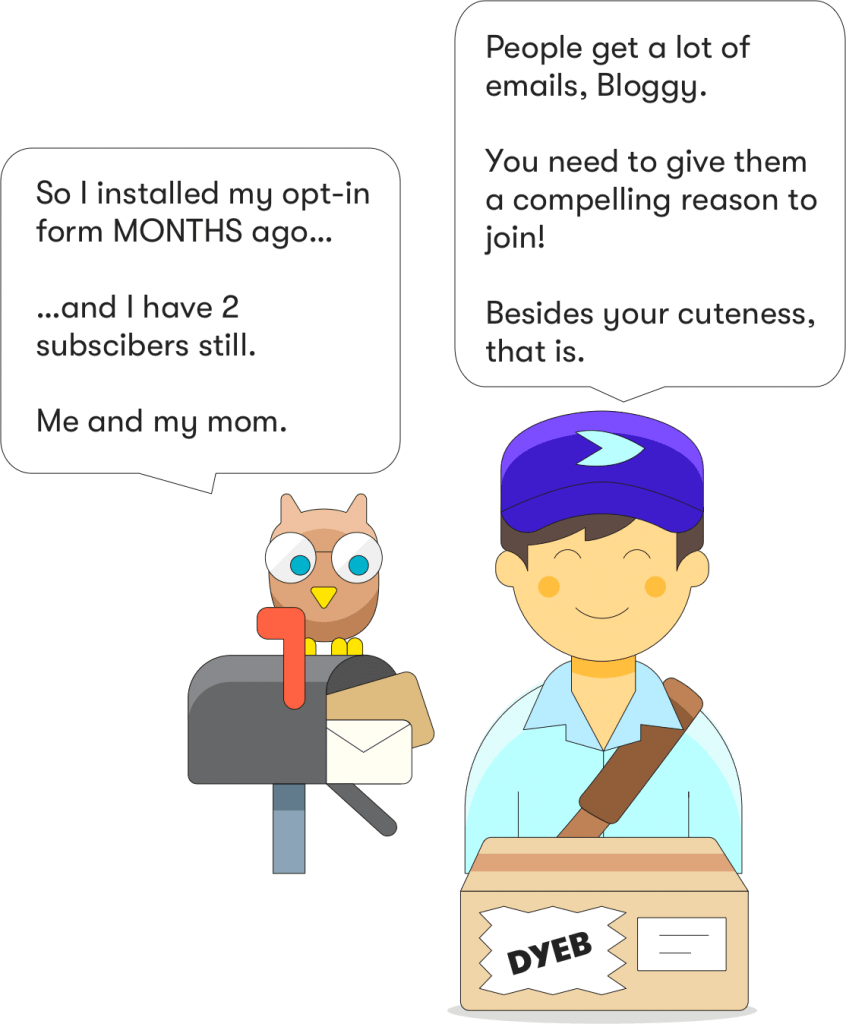
“Subscribe here” doesn’t do ANYTHING for anybody.
Here are a few proven ways to attract email subscribers.
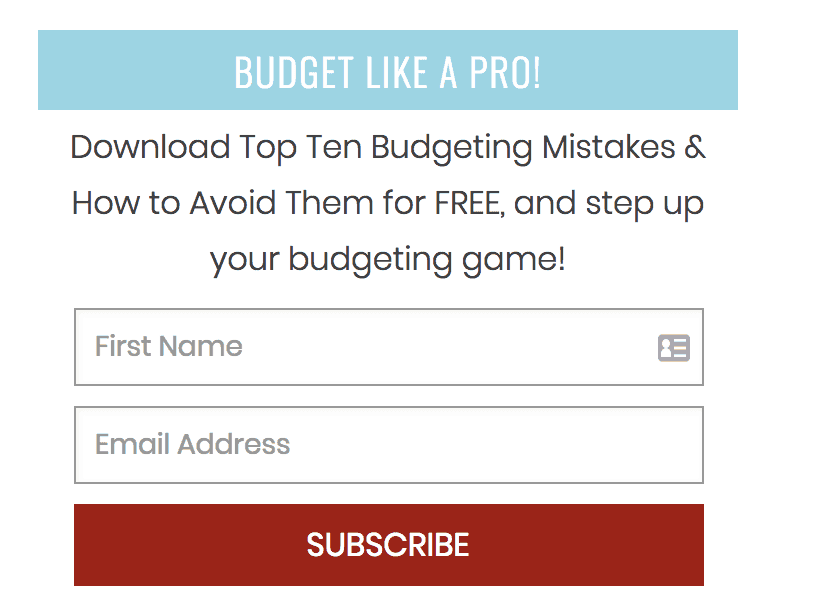
A “bonus” piece of content you give away in exchange for somebody’s email. It needs to be something your reader REALLY wants!
If the freebie isn’t desirable enough, it’s not going to attract emails. (see more below)
If you’re new, go for the short (but effective) free email course, as you don’t need to learn how to produce video or design a nice-looking ebook, etc.
Share the purpose of your newsletter and ask people to join.
Include 2-3 sentences on WHAT your emails cover and WHY they should join!

Example:
Be sure to join our infrequent newsletter, where we send out exclusive content you won’t even find on the blog, as well as updates, deals, and other really useful content on [your topic].
Our emails don’t stink 🙂
Want to learn more? Here are 20 email list-building strategies for beginners.
Just make sure it’s GOOD and personal!
The more time and effort you put into making it good, the more likely people are to stick around to your email list….or even share it.
There’s not better platform for communicating with your audience, whether that’s informing followers of new blog posts, selling blogging products, or just sharing thoughts or ideas.
Also, it’s not rocket science!
First, know that making money from a new blog is hard, and it takes time to grow!
But it is possible.
In section we’ll cover blog monetization methods to use when you first start a blog, as well as long-term strategies to produce part or full-time income.
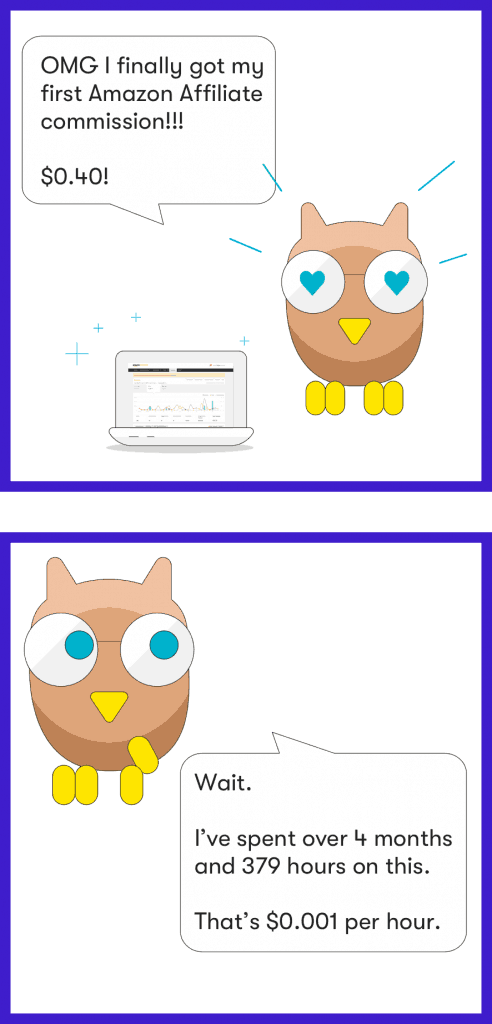
IMPORTANT: I have a massive, thorough, GREAT guide on blog monetization here. Go reach that for way more useful info!
***
Before we discuss different ways to make money–and strategies–know this first.
There are 2 factors for making money from your blog:
Bloggers who make money either have lots of traffic & followers, or a great deal of trust from their audience, or both!
Obviously a blogger who has millions of pageviews a month stands to make more money than a brand new blogger.
However, building a transparent & authentic blog can help jumpstart the earning process, because the followers you DO have will know you and trust you more.
Blogs are monetized in a few different ways:
We’ll cover all of these below!
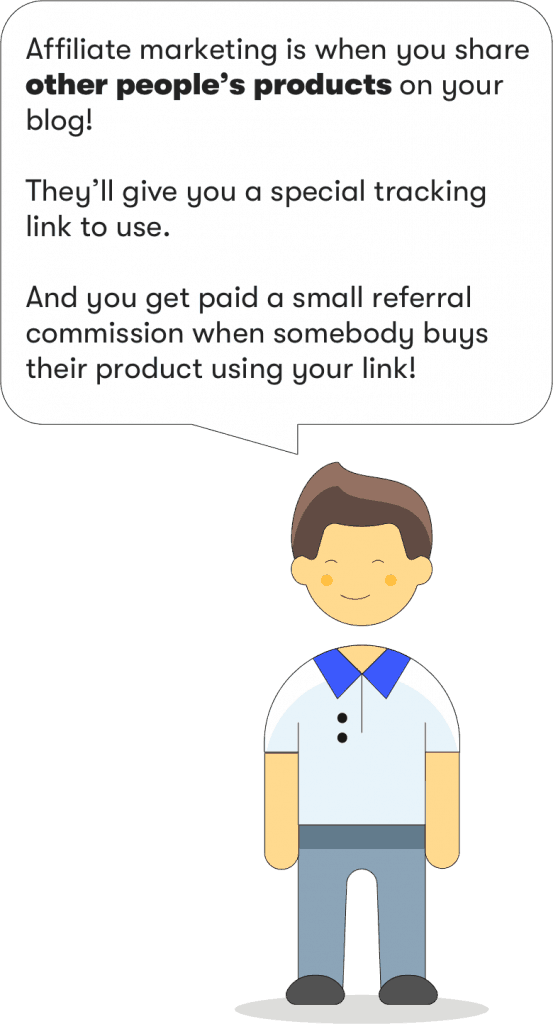
Affiliate marketing is process of promoting other people’s products (usually through a special link given to you), and receiving a “referral commission” when somebody buys through your link.
For example, I applied to be a part of ConvertKit’s affiliate program, they accepted me, and now I can share my “special URL.”

If anybody signs up through one of my links, I get 30% of everything they pay ConvertKit!
Obviously, there are strategies to increase the likelihood of your readers purchasing through your link.
We’ll discuss those below!
Amazon allows you link to any product on Amazon and receive a small commission if the clicking person buys anything.

You can apply for the Amazon Associates program here.
Once approved, you’ll have a new stripe at the top of your Amazon pages.
There are also several networks of companies that make finding affiliate products a breeze:
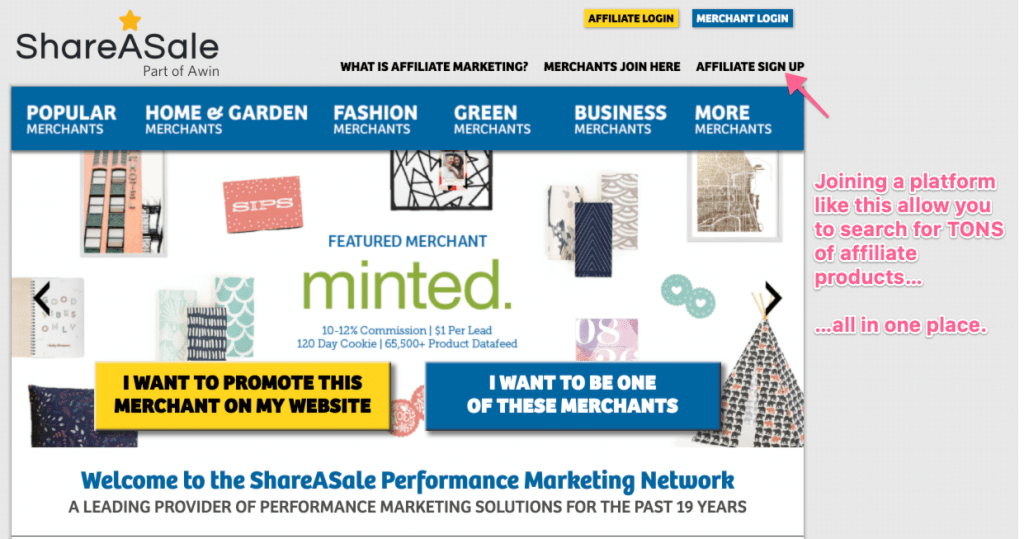
Once you have an account with any of these networks, you can search for products by category, and they also have a streamlined application process for each “vendor.”
They work the same way, but it’s for different companies outside the Amazon bubble.
Massive? No. Some? Yes.
In order to make referrals, you’ll need people clicking through the links and buying!
There are two ways to improve conversion rates:
There are 2 kinds of affiliate marketing:
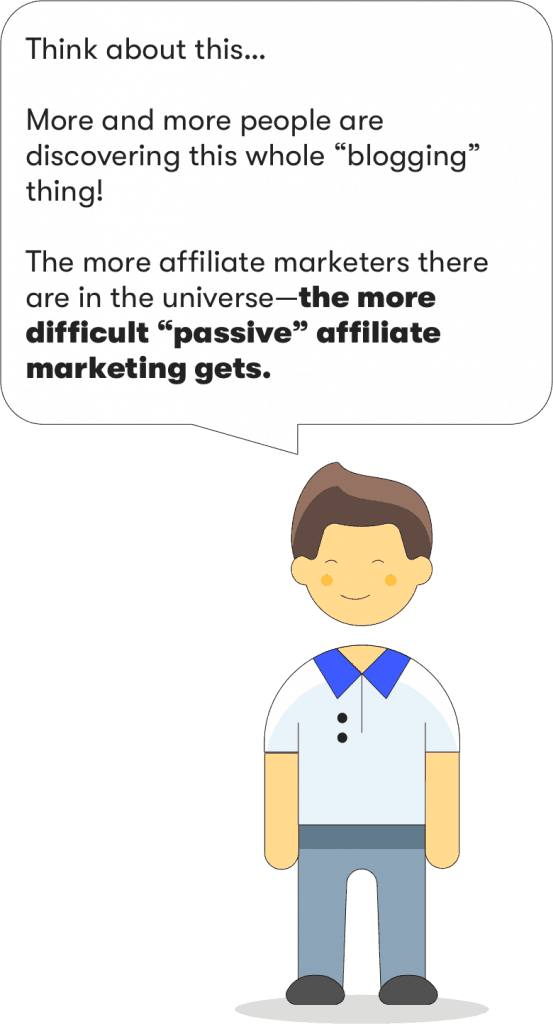
In order to make $500/month or more via passive affiliate marketing, you’ll need traffic!
Lots of traffic.
That’s where “active” promotion comes in.
It’s simple. Create content specifically designed to sell other people’s affiliate products.
SmarterQueue is my recommended social media sharing tool for new bloggers, and I created an in-depth review and tutorial post for it:

Creating blog or social media content specifically to sell an affiliate product is much more compelling to your readers, and it also gives off a feeling of “trust me!”
Else you wouldn’t have gone through the trouble of creating the entire blog post.
Here's another important strategy:
Only promote products that are a good fit for your audience, and that you ACTUALLY recommend.
Do you believe in your own recommendations? If not, DON’T PROMOTE.
Sacrificing reader trust is not worth the chance of the small commission.
Warning: I am not a lawyer, nor does this blog post provide actual legal advice. The following are just my tips and opinions.
The government has mandated we disclose that we’re sharing affiliate links! This means

This article details how to create an affiliate link disclosure, and you can use a plugin like this one to display the notice.
Overwhelmed?
When you first start a blog, do this:
When that happens, do a quick Google search to see if that product has an affiliate program, and apply at that time!
Don’t waste time applying to 18 programs before you have the audience in place to click on your links!

Blog ads are “dynamically inserted” advertisements from 3rd party ad platforms, like Google Adsense, Adthrive, or Mediavine.
“Dynamically inserted” just means that all you do is install a bit of code on your blog, and the content of the ads (and which companies are being advertised) update automatically!
You earn a tiny amount of revenue when a visitor sees the ad, and a bit more if a visitor actually clicks through the ads.
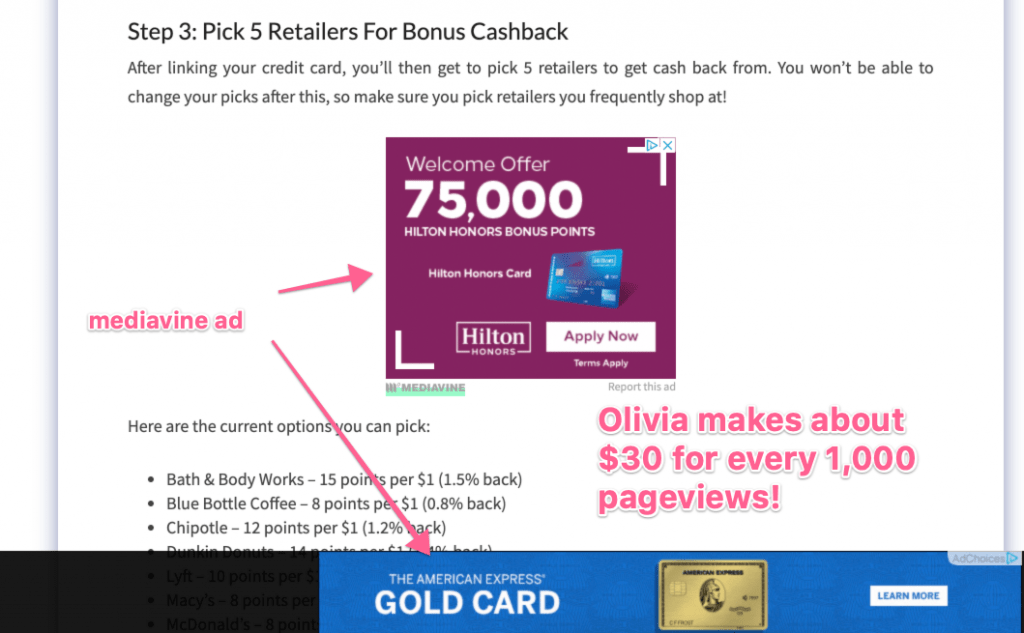
You can technically sign up for Google Adsense when you start your blog–but until your traffic grows to 1,000-5,000 page views a month, it’s not going to pay you anything!
I do not suggest putting ads on your site as a new blogger! The ads distract from your content, and there are far better ways to make money 😃
There are companies out there who will pay you to produce content that talks about their product or service!
However, if the thought of emailing influencers or companies asking them for money scares you…this monetization strategy is not for you.
When you’re a big-time blogger, companies will reach out to you asking to sponsor you!
But when you first start a blog, you’ll have to do the outreach ☹️
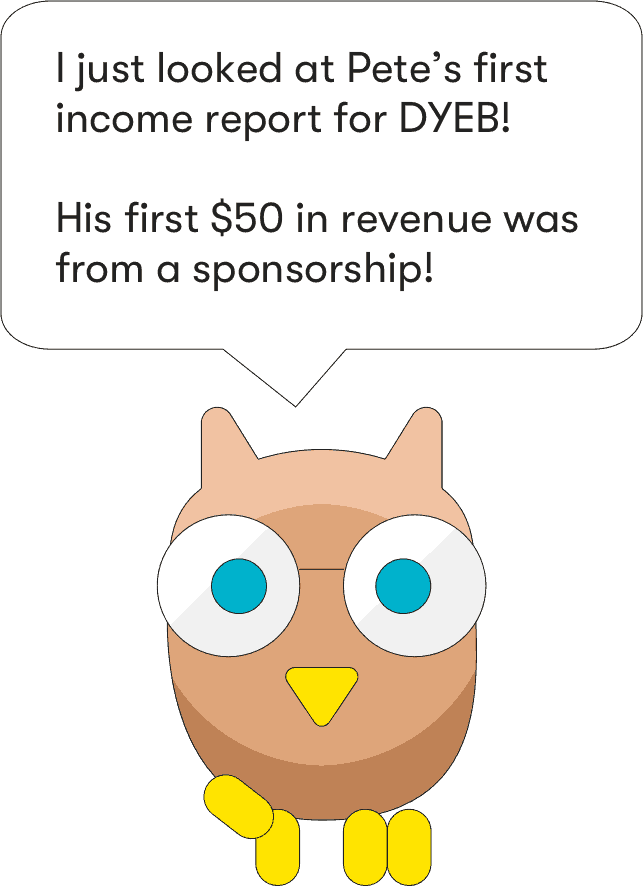
NOTE 👉👉 I have a whole separate post on blog sponsorships here, including an interview with a lady named Rachel who is BOSS at sponsorships!
***
And by “brand,” I mean another blogger you could provide value to, a small business, or a large company.
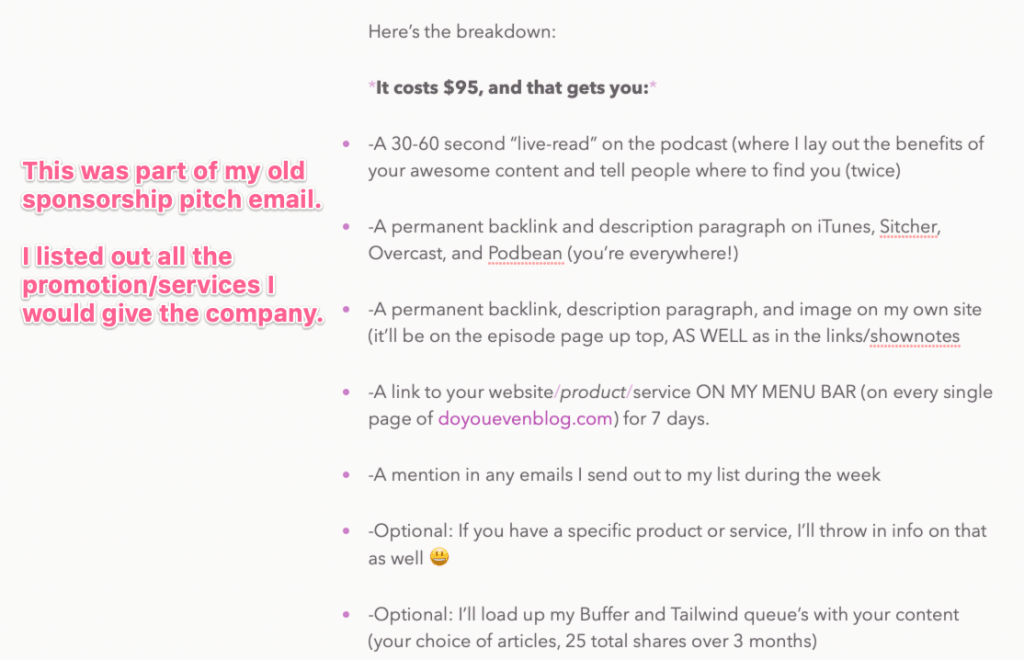
When it comes to sponsorship pricing…
That third part is crucial! Even as a new blogger, you have more to offer than you think!
When you first start out–start with asking the brand/company what their budget is!
Use that as a first step to negotiating and to get a rough idea of what you should charge.
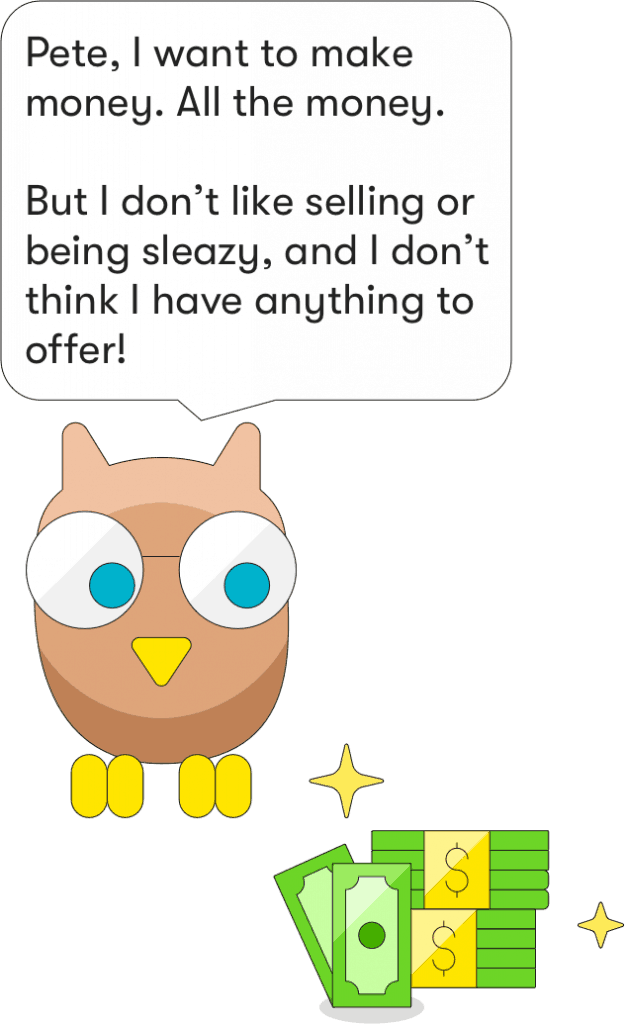

From ebooks, online courses, membership sites, etc…
Creating and launching your own products is more difficult than affiliate marketing–but also more lucrative.
There’s only one rule for creating your own products: It must be worth paying for. The format matters less than whether or not your audience WANTS the product.
Build products people ask for, and making sales will be 10x easier.
Out of all the world-class bloggers I’ve interviewed, 90% of them sell their own product in some way!
Here is a screenshot of my friend Liz’s ebook sales widget.
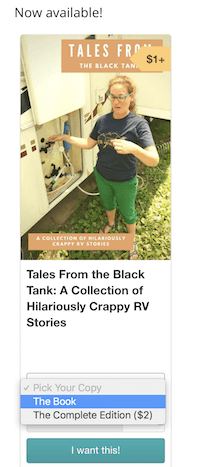
2 Real Example of Products I sold in the early days of this blog
A 30-day blogging challenge.
My first product was a 30-day email course, prompting bloggers with challenges to grow their audience. 20 people purchased it for $1,600 gross.
What I learned:
The “Most Productive Month Ever” Program
This was a service where I called bloggers to check-in on their goals each week—and also give them encouragement and advice.
I charged $125 for the month and had 6 people buy-in for $750 total.
What I learned:
Get creative trying to answer the most important question: What does my audience need?
I eventually took everything I learned with those early products and started creating blogging courses & workshops!
I made over $31,000 from courses alone in my first 18 months.

As of 2021–digital products make up over $100k/year of my business 🙂
Step 1 – Have at least some small audience.
If you’re a new blogger, you won’t be holding six-figure product launches.
However, you can (and should) start small, with a small audience, and work your way up!
Step 2 – Establish a connection with your audience.
That ebook pictured above sold over 100 copies when Liz launched it to a list of only 300 people.
How??
Because Liz took extra time to email back and forth with her early followers, asking them questions & creating a real connection! This allowed her to “warm up” her audience, as well as understand them much better.
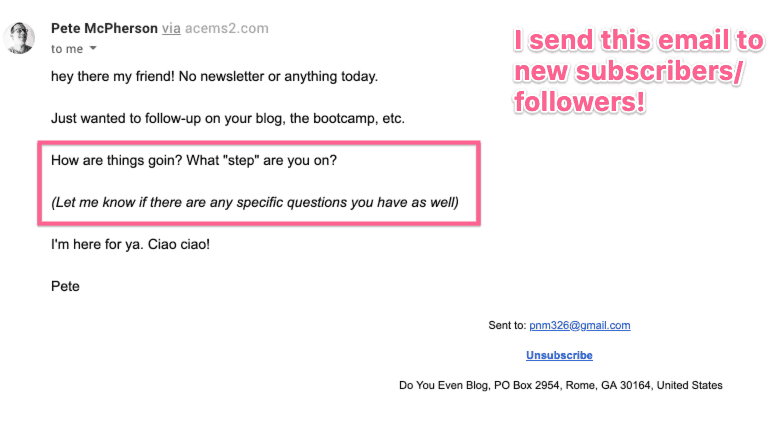
Step 3 – Brainstorm ideas for your product.
Here are a few questions to help:
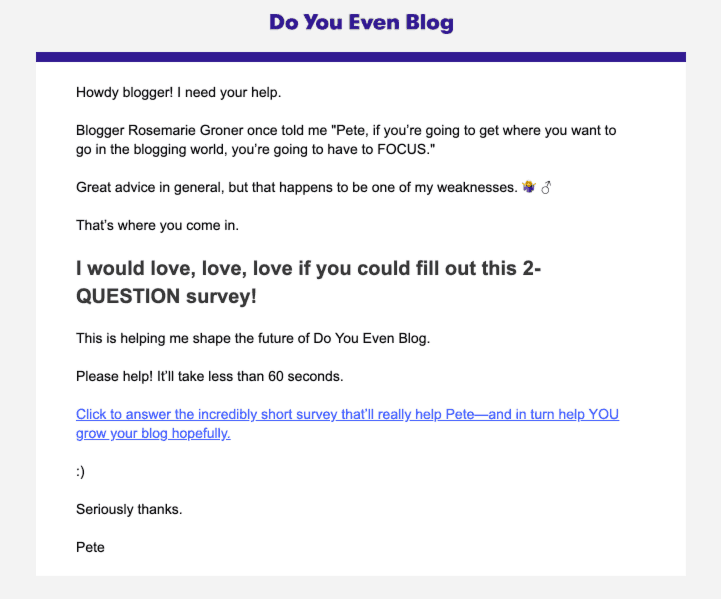
Step 4 – Validate your product.
Repeat after me: I will validate a product’s potential BEFORE I do the work of creating it.
So how do we validate product ideas?
We ask people to pay for them (buy) before the product even exists.
Sure, you could ask readers if they would buy your product, but nothing compares to actually asking for their money. That’s when you know you have a viable idea, or a dud.
Step 5 – Build the product.
Step 6 – Launch the product.
I’ve already mapped out a simple product launch checklist you should read.
Go read that, and good luck!
Many of these questions might not mean much to you know–but they might soon!
When you first start a blog, you don’t actually know what you don’t know.
I.e. there may be things you’re doing wrong or could be doing better–but you’re simply unaware of that fact!
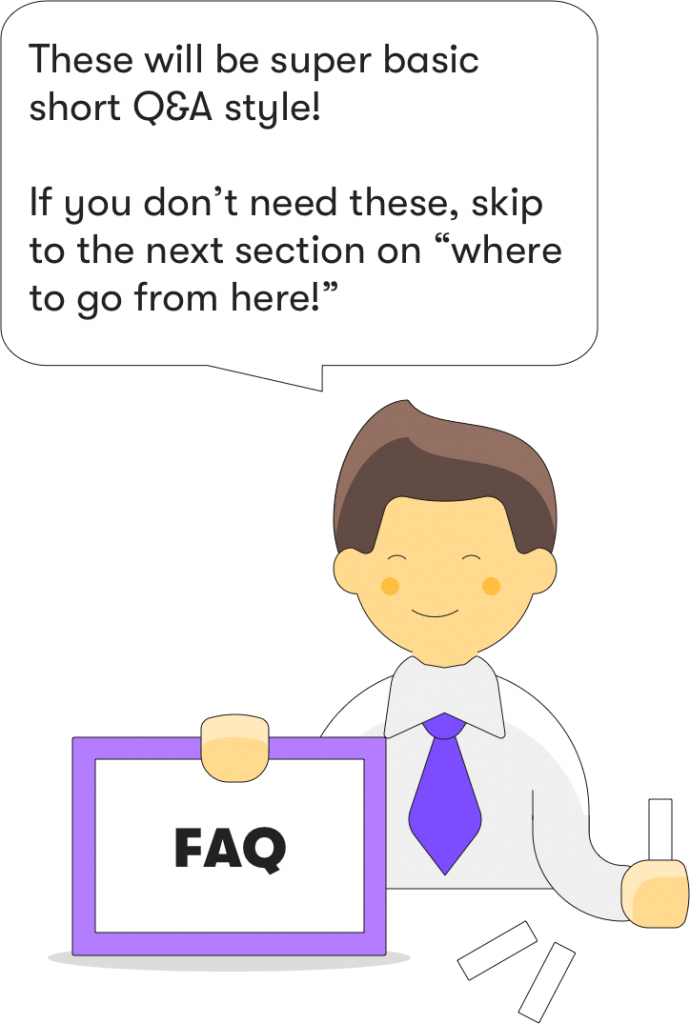
FAQs related to starting a blog:
Click the boxes to expand the answers!
The process of starting a blog has never been easier in 2021! You’ll simply choose your topic & domain name, purchase a hosting account and install WordPress, then customize your site and start producing content!
The only change for 2021 is the fact that so many new blogs are created every single day!
The importance of niching down, standing out, and remaining consistent has never been more important.
Starting a personal blog brings several benefits, including…
The cost of starting a blog depends on the medium you choose!
You can start for free using a site like Medium, Blogger, or a free WordPress account.
If you want more customization and a custom domain name, you can start with a hosting company like Bluehost, Godaddy, or SiteGround for as little as $3 a month.
FAQs related to making money from a blog:
It depends on how they are monetizing their blog.
Bloggers who run ads on their site get paid a small amount (from the ad network) per page view and per click.
Affiliate marketers earn a small referral commission every time one of their readers make purchase after using their unique “affiliate ink” URL.
Bloggers who create and sell their own products usually get paid from their customers directly using an ecommerce platform, etc.
When you first start a blog, it could take several months to ramp up an income stream.
The most common forms of beginner blog monetization include serving display advertisements on your blog posts–and making money through affiliate marketing.
New bloggers need to build both the size of their audience, as well as trust and respect from their audience.
This process can take several months, and even 1-2 years.
However, display advertising and affiliate marketing strategies can be implemented starting from day one–and usually grow slowly as traffic starts to increase.
FAQs related to driving traffic to a new blog:
The platforms that tend to drive the most traffic quickly include social media channels and Pinterest.
The first steps to driving traffic quickly is to set up social media profiles on the platforms you believe will serve you the best, then start connecting with other bloggers in your niche (as well as potential readers!).
Next, set up a Pinterest profile and start creating pins for new blog posts, pinning them to relevant boards you’ve created.
Your traffic will not explode immediately, but these strategies are quicker than long-term SEO traffic.
First, you’ll need to define who your audience is in as much detail as possible. This will help you create content that will attract them better!
Next, brainstorm where your audience hangs out on the internet. Which social platforms do they use? Etc.
Next, you’ll need to start creating content (consistently) that matters to them! Once you understand your readers, their lives, and their problems, this will seem easier.
Last, ask them to follow you. Literally.
Ask to follow you on social media and opt-in to your newsletter. Be direct and tell them what’s in it for them to follow you!
There are four primary blog traffic sources that can utilized for free:
By creating quality content that matters to your specific audience, and promoting your blog posts on these channels, you’ll be driving traffic for free.
But it’s a long, hard process!
For short-term traffic strategies like promoting on social media–the speed at which you drive traffic depends on how quickly you can grow your followers!
You can always reach out to your immediate network of family or friends when you first start–this will help you send an initial wave of traffic to your blog.
For long-term strategies like SEO, you’ll need to build authority and backlinks, as well as body of content. This generally takes months to start sending 1,000+ page views a month, and roughly a year to start sending 5,000+ page views a month.
When you first start out, commit to at least 12 months of blogging!
First, you’ll need to identify the “smallest viable audience” within your niche. I.e. “niche down.”
Creating content for this subset of your audience makes it much easier to stand out to those individuals. You can broaden your scope later on.
Also, a catchy brand name, domain name, and professional-looking brand colors can help you stand out in social media promotion.
Your headlines are also incredibly important for grabbing attention on social media or Google SEO–so spend time making sure your headlines are enticing (but also relevant to your audience and to the topic at hand.)
Did I miss anything?
If you have any questions, please drop me a question in the comments section below!

At some point, every new blogger wants to quit during their first year.
Seriously.
Below is a guide to quitting or not quitting–as well as how to set yourself up to make it through the tough times and come out ahead with a success blog!
0-3 months
Do not quit. Period. Commit to at least 3 months.
3-6 months
You’re past the technical frustrations and feeling comfortable producing content.
If you’re feeling frustrated over…

6-12 months
This is when NOT seeing growth wears down your enthusiasm, motivation, and stamina.
It SUCKS.
Quit if you believe it’s right, but I’d HIGHLY encourage you to focus more on the process, and less on the results.
This tough period is why I built most of my courses and programs–to usher people through the other side to blog sustainability!
Get connected and lean on others.
A blogger support network (friends and groups) will be the difference between success and blog mediocrity.
First, join the Do You Even Blog Tribe Facebook group.
There will ALWAYS be a great group of bloggers willing to step up and help you with any problems you might be facing.
Next, email [email protected]. I open every single email I receive.
If you’re thinking about quitting but not sure, email me and I’ll do my absolute best to help you make the right choice.
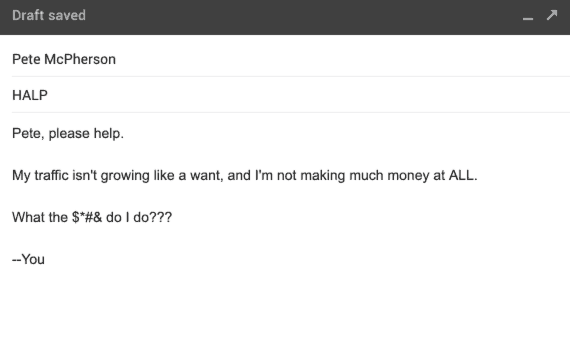
Last, make a blogging friend.
I mean “friend” in the real sense of the word!
Somebody you can confide your struggles with, ask for advice, and generally just grow with!
Start hanging out in blogging groups, be real, and seriously try to find a blogging buddy.
A wise person once said “Blogging success isn’t about one big event–it’s about a million small events you conquer every single day.”
Truer words have never been spoken.
Now that you’ve started a blog and began the journey, let’s talk about what to do next in order to grow.

Do the work! Blogging is about a 1,000,000 small changes and wins performed every day.
I have amazing podcast interviews with Alisa from Tailwind, as well as Kate Ahl from Simple Pin Media.
However, I do not teach Pinterest marketing on Do You Even Blog!
I recommend checking out Kate Ahl’s blog and podcast over at Simple Pin Media!
Take my free course, 60-Minute SEO!
I’ll take you to 90% SEO mastery in 10 minutes a day for 6 days.
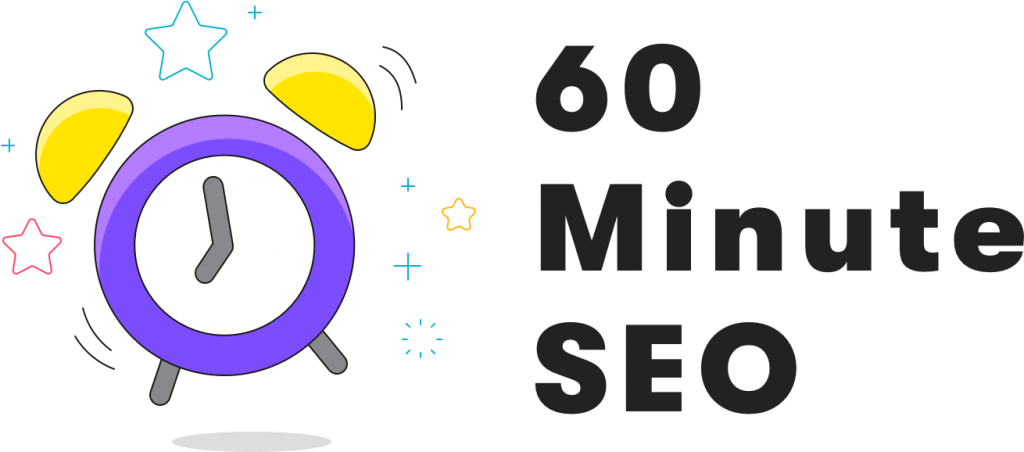
You can download my free 2021 Podcast Launch Checklist here…
…or better yet, grab this free on-demand podcasting training!
Here’s my megapost on monetization.
You should also subscribe to my YouTube channel, as I talk a LOT about monetization there.
You might also grab my free $1K/MONTH PLAYBOOK.
Enjoy this post?
First,
If you’d like to join the Do You Even Blog Tribe, you can do so below.
Our email list sends out blogging content you won’t fine anywhere else–including on this site 😃
Second,
If you already have a blog (bonus points if you have your own “how to start a blog” post!), you can support DYEB by linking back to this post from your own blog!
Third,
If you feel so inclined, share this post with your friends!
Questions or comments? Drop a comment below!
If you don’t have any questions, feel free to comment and say “hello” anyways!
I love hearing from you all 🙂

87 Responses
Wow. Simply, WOW!
I’ve bookmarked this page to refer back to it.
Thank you so much Pete for putting all this together. Honestly, it’s so refreshing to see a comprehensive post like this.
Keep it up!
Haha. You’re simply too kind Denis, and thanks a million 🙂
This is badass!! Going straight to the top haha. Happy blogiversary Pete, can’t wait to see what the next year will look like!
Ryan
Thanks man! So glad I had the chance to connect with you throughout May. Here’s to another year for both of us!
Love this post Pete. So much value. Very nicely laid out (it’s hard not to just keep scrolling through).
Thanks for sharing your abundant knowledge!
Well, you are more than welcome Chrissy. Thank YOU 🙂
Pete,
This is an absolute must read for anyone thinking about blogging. There is so much value here and you provide a roadmap for the first year of blogging. Honestly longer because in year two they can scale, tweak and pivot.
Love the fact that you provided this for FREE when others would charge! Keep producing high quality posts like this. They are so important for the blogging community as a whole.
Eric. Thank you, buddy. That means a lot!
INCREDIBLE resource man, thanks for putting this together! I’ve bookmarked it and will be referring back to it. So much valuable information all in one place, that bloggers new and old can benefit from. Keep up the great work Pete, rooting for you!
Hey thanks Matt! I appreciate the kind words, and glad you like it 🙂
Wow! Great job, Pete! Love, It.
Thanks Katie 🙂
I do not blog. I was lead to your site by a link and my curuous mind started reading. If I did want to blog I would hope that I would know about your site. It seems to be a thorough up front no bs guide that is great. Just wanted to say that.
Ha. I love this!
Well, come on back if you ever do. I’ll be here to help 🙂
Nice job! Thanks. It was helpful blog.
Of course! You’re more than welcome 😉
Great informative post! I can see you put a lot of time and effort into making this a robust all around guide to starting a blog. I will implement a few of the ideas here into our personal finance blog!
Woot! Thanks Jake! Welcome to the game 🙂
Hi Pete McPherson!
Nice Article, Thanks for sharing your ideas,
I know many will disagree, but the hardest part. Choosing a niche, etc. that’s all easy for me. Promoting blog is the hardest part as I think it takes time to really build it up.
Consistent effort over time will lead to success!
Agreed! and you’re more than welcome, btw 🙂
Hi Pete,
Absolutely unreal resource!
This is truly content at its best and this will be saved and returned to at lots of points I’ve the next year!
I’ve started listening to your podcast recently and I love how you started out. You got some big names on there early on too!!
Looks like you’re crushing it and I’m very grateful I found this.
Mike
p.s. I’m 2 months into my “proper blog” do you recommend getting the email list set up and running?
Yup, though my take is a tad controversial.
I recommend getting the email setup ASAP–optin form on your site/sidebar, etc–writing down a “what why what” paragraph next to the optin (https://doyouevenblog.com/what-why-what-formula/)–then texting/calling/FB messaging 100 people you KNOW and personally getting them on your list.
Just a little jumpstart 🙂
Already gave some Twitter love on this, but wanted to comment specifically on this article. It’s obvious that you’ve put a lot of time and effort into creating this content (a perfect example of the “good content” you speak about) and it is so incredibly useful to your readers. Way to knock it out the the park.
Thanks Mollie!
I sincerely appreciate that actually 🙂 Means a lot.
thx, i like it a article
Hi Pete,
Nice post!
Thanks!
This is remarkably awesome post!
I got stuck reading the entiiiiiiiire thing.
As a new blogger, you’ve given me tons of useful information about blogging.
Thanks Pete!
Site bookmarked!
oh the bookmark! Thanks for that Mina, and good luck with the niche/review site as well 🙂
Nice job! Thanks. It was helpful blog.
You’re welcome!
Thanks Pete.
I read almost the whole post and have had my blog 2 years.
I bookmarked it and learned some things. I think I will learn even more when looking further into the links you provided in each category.
Speaking of which when i setup my categories i dont remember writing descriptions for them, this is something im going to do right now.
keep it up Pete.
cheers
yus! That makes me so happy to hear 🙂 I’m so glad you found it helpful 🙂 🙂
Hi Pete,
Thanks for sharing your ideas! I don’t really see the same tabs on my wordpress site. I am trying to categorize my posts into different pages. I don’t see the “appearance” tab on my site. Any help would be appreciated! thank you!
Are you using WordPress.com? Or WordPress installed through a 3rd party host?
Email [email protected] 🙂
Fantastic resource, Pete. Definitely stands out and provides more value than 90% of the other guides on how to start a blog.
Keep up the good work 🙂
Best,
Lidiya
Thank you Lidiya! 🙂
Lots of good stuff in here!
Thank you Marie!
This is one of the best blogs with illustrations I have recently seen. I have created blog and quit in the first month itself. This motivates me to start again and not quit in a month and atleast give it some time.
Thanks for sharing it.
You are more than welcome 🙂 🙂
Nice post
.. and I need your small help sir.
Whatcha got? Feel free to email [email protected]
It’s more than amazing, really. I didn’t even think that I could find that much information in a single post. It’s a complete guide to start from zero (0) to reach till 100 or even more. Thank you! I am going to start a blog with this guide soon.
Aw. I’m glad you liked it Fasiha. Thanks for reading, and good luck 😉
Thank you. Very detailed!
Just share my experiences. I built a free WordPress site and stopped using it after a few weeks because my short stories were brought to different places. I’ve just come back with a new site and this time I will select some effective protection tools.
Pete, you are a beast! I’m so glad I found your blog while I am putting together my own new band blog and website. Thank you so much for this!!
hey thanks Matt! Appreciate that, and lemme know if you need anything 😉
Thank you for your advice, tell me what is better to use Squarespace or WordPress? I like Squarespace design more but maybe WordPress easy to manage? I would love to hear your thoughts, Brenda.
Hey Brenda! WordPress for sure!
There IS more learning curve, but it’s ultimately far more customizable, and you should be able to find some nice themes that mimic the “look” of Squarespace. Try StudioPress themes maybe.
Awesome and helpful list. Great thanks for sharing this with us. Really appreciate your blog.
You’re welcome 🙂
Now this is what we call an amazing piece of information. Everything is present at one place. FAQ’s, Best way to use bootstrap accordion and writing down questions in it, amazing.
Clean UI of website and colour scheme, anyone can fall in love your website. Now talking about the information you have provided is very good. One thing that we would like to ask from you:
How do you determine or guide a blogger in which tier he or she is: whether it is tier 1, tier 2 or tier 3? Many people didn’t know about the levels and they keep building backlinks but how they can measure a level. Is there any count of what?
Hoping to get a good answer from you 😉
Very comprehensive Pete. Thanks.
I posted something on a similar topic recently (not as detailed) and this has given me food for thought in how to approach article writing / information sharing. Can I ask how long it took to put this together?
Over 120 hours so far 😉
Wow… and I thought 12 hours on mine was a beast!
I wanted to start my own blog but every niche in which I am good have many blogs already exited on Internet so, now I am planning to start a youtube channel on cydia and jailbreak can you suggest me how to start
Start shooting with whatever camera you already have (your phone?) and hit publish today 🙂
Then do it again tomorrow, and the next day, and the next.
Learn editing as you go along, and the same with YouTube SEO.
Hi Pete, My name is Carolyn Garcia, I don’t know how I found your website but I love it. You give so many step by step information that could really help me. What I have a lot of problems with is the dashboard, how to make a page, how to make a blog page, content?? There is just about everything that I don’t understand. I have had my website jaydeandjewelsbaking.com thru wordpress.com even though I would like to change it over to .org to maybe moneytize it, but again don’t know how?? I have had my website since 2017 and added a few pictures and that’s it, lost from there. So I’m hoping and praying after reading your how to start a blog maybe I can get somewhere. Thank you Pete and I will for sure bookmark this page, Have a wonderful evening. Sincerely Carolyn Garcia.
Hi Pete,
There are many so called “in-depth” guides online about the how to start a blog. This is by far the best and most comprehensive guide available on the web about how to start a blog. You have nailed it, there is no topic that has not been covered in guide. I thoroughly enjoyed reading this guide. You did not sugar coat anything about blogging. I would suggest any newbie who wants to quit their 9-5 job to read this guide first before getting into blogging.
hello Pete thank you for helping me start my blog
Interesting list of suggestions. I have got blogs a long time, but some points are new to me.
Hii
I want to start my own blog but on various niche.
How to do it and how it can help me in earning?
Great and an informative article! Thanks for share this Information.
Hi Pete McPherson,
Really Great Work. This is an awesome article with full of valuable pieces of information.
Thanks for sharing such great content.
Cheers,
Keep providing valuable content like this.
wow this is amazing template and website i will try now
I couldn’t figure out how to get this information to save for later…so I’m writing you to see if you will send the info to me so I can take time and read it.
Thank you.
Emailed 😉
This is amazing! I wish I found this a bit earlier when I was reaaaally struggling because I had to teach myself everything. You’re a great guy, thank you so much! Now I feel much more confident to start creating content.
I’m so happy to hear that Enya 🙂 Thanks for reading and going through!
Hi Pete,
Really good walk-through, thank you so much!
/Sune
Of course! Thanks for being here 🙂
Hey! Pete
I read your post till the end and found it very helpful. The blogging checklist have you made is really great that can anyone use to start and grow the blog.
Thanks for sharing! Big Kudos
Very detail guide on “how to start a blog “. Bookmarked it . Thank you !
Hey, Subodh I follow Pete McPherson constantly and he provides excellent information to people. This guide on how to start a blog will be very helpful for beginners who want to start blogging as a business.
Hey! Pete
I read your post till the end and found it very helpful. The blogging checklist have you made is really great that can anyone use to start and grow the blog.
Thanks for sharing! Big Kudos
Awesome! So glad to hear it 🙂
Expertly written post and easy to read and understand.I like the way it’s presented; it’s different to other posts but full of value to readers. Good job.Thanks a lot